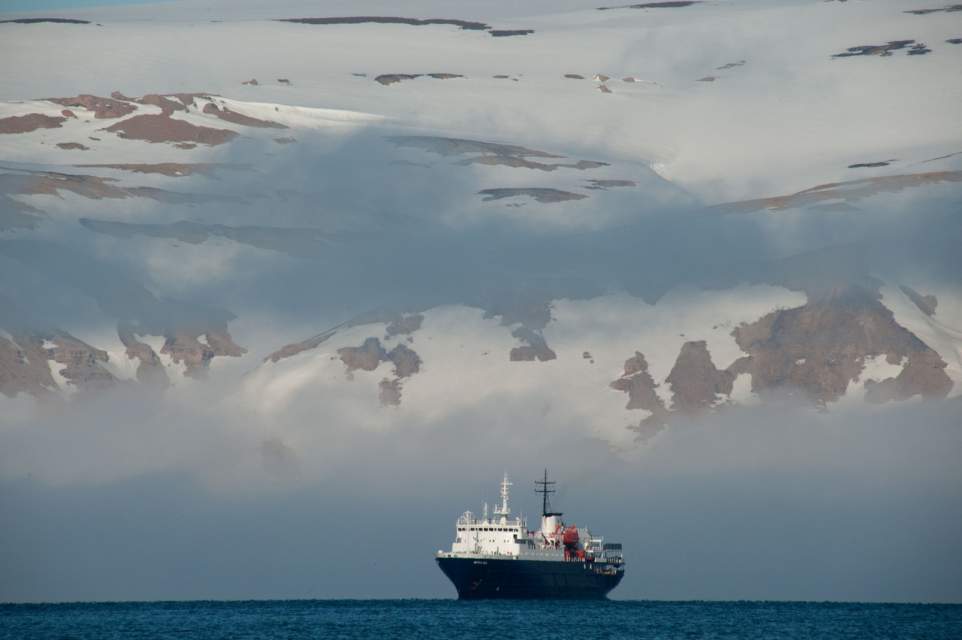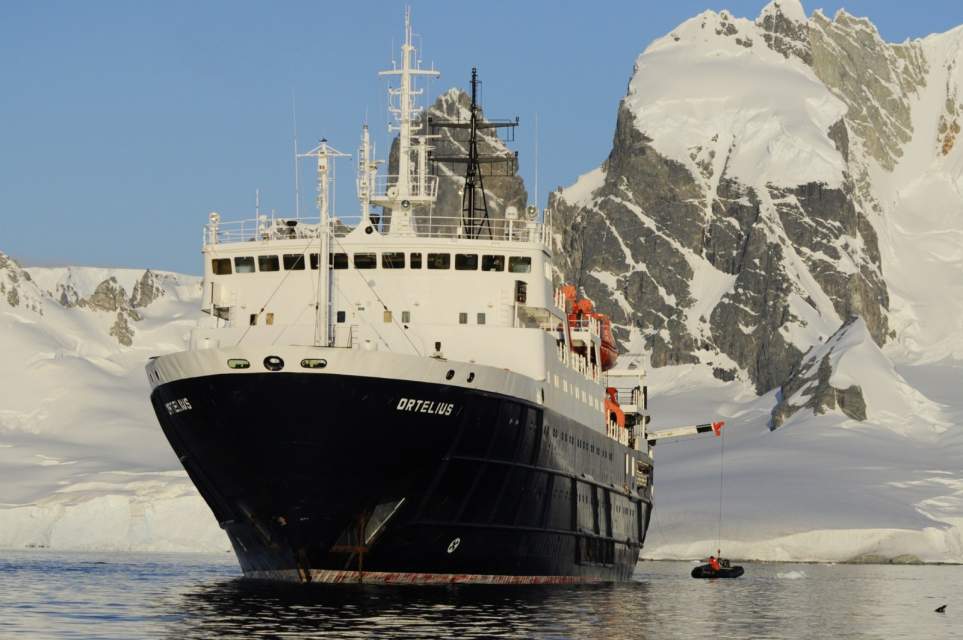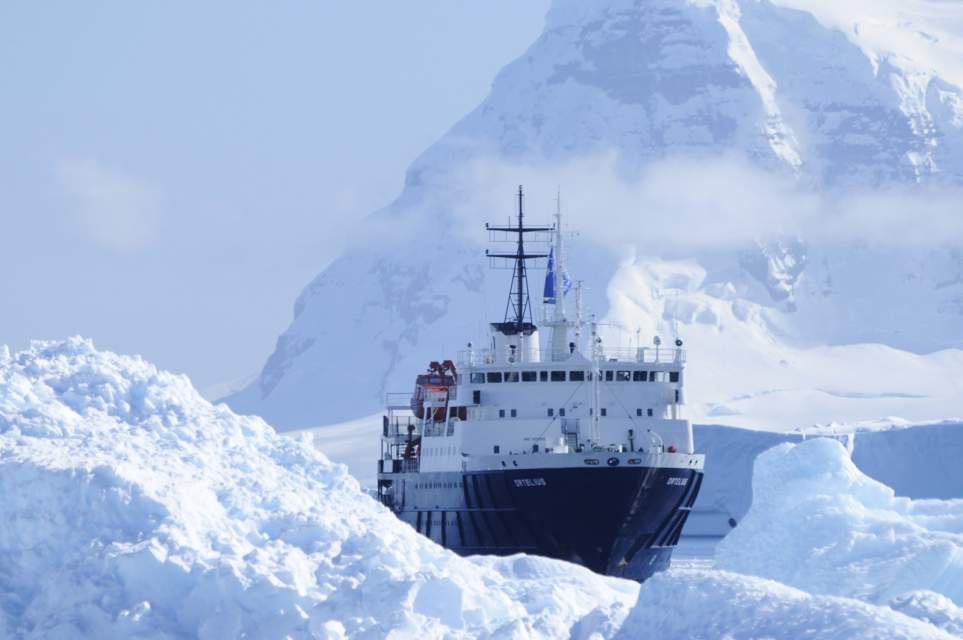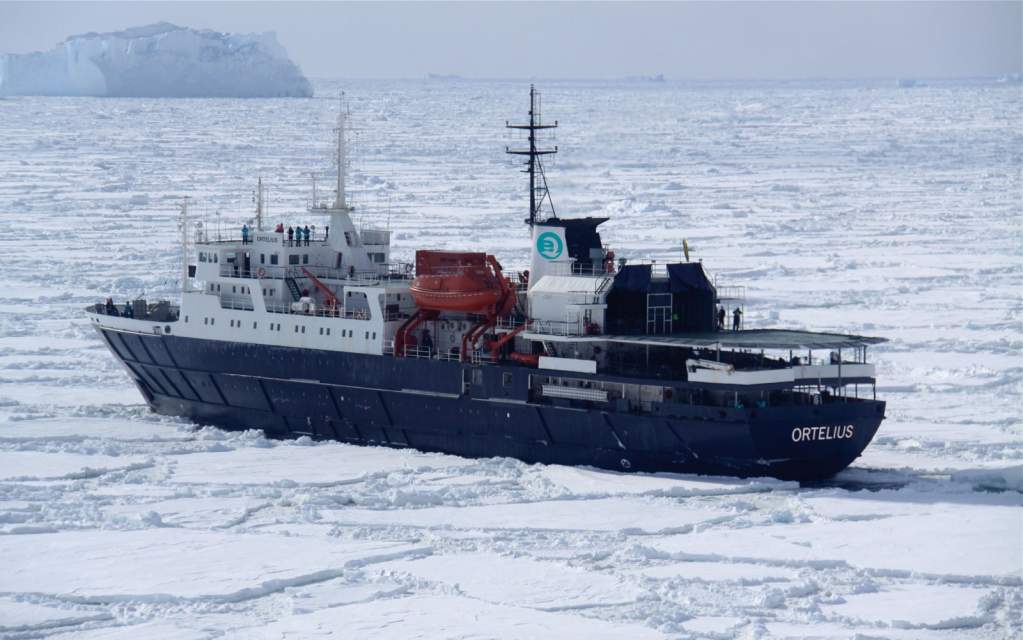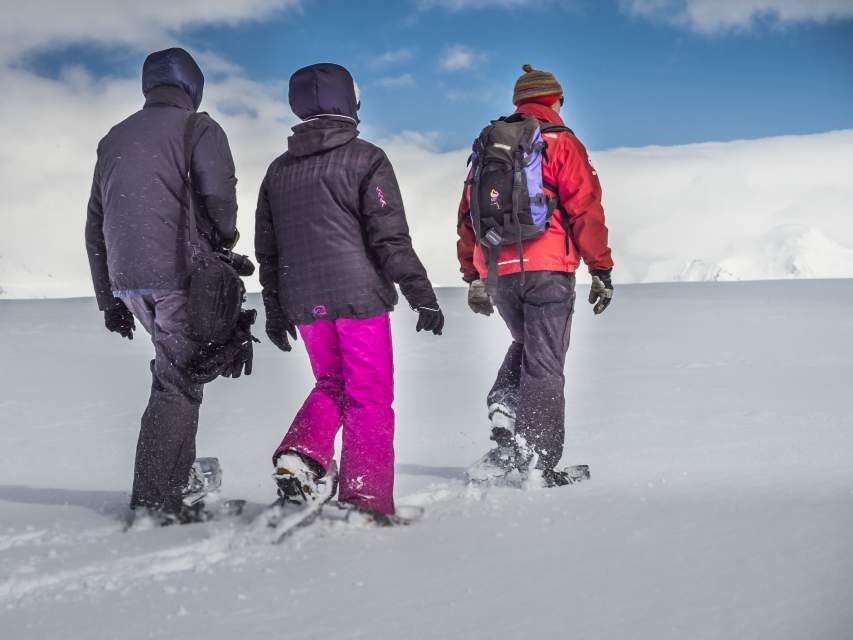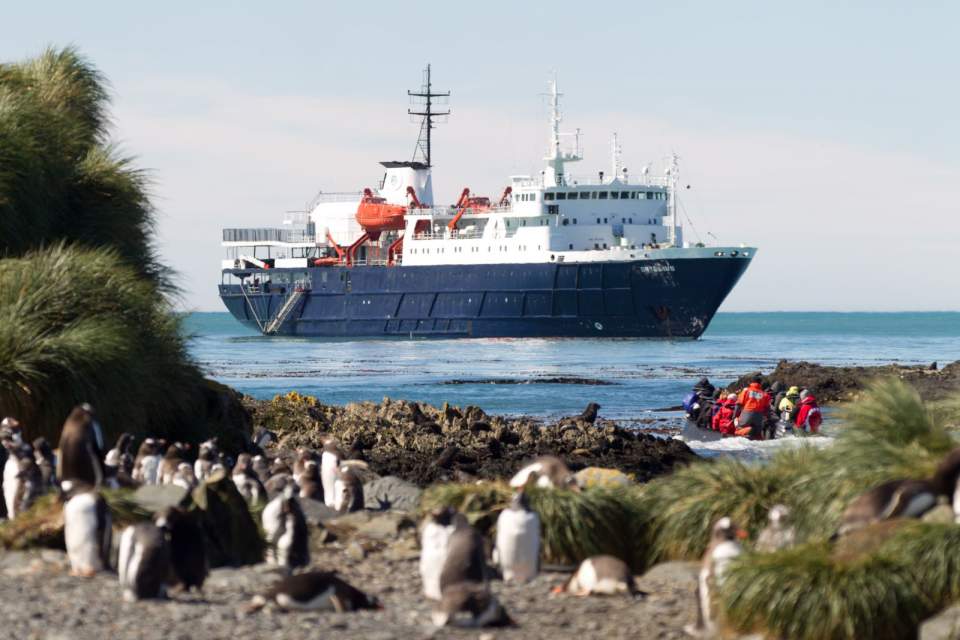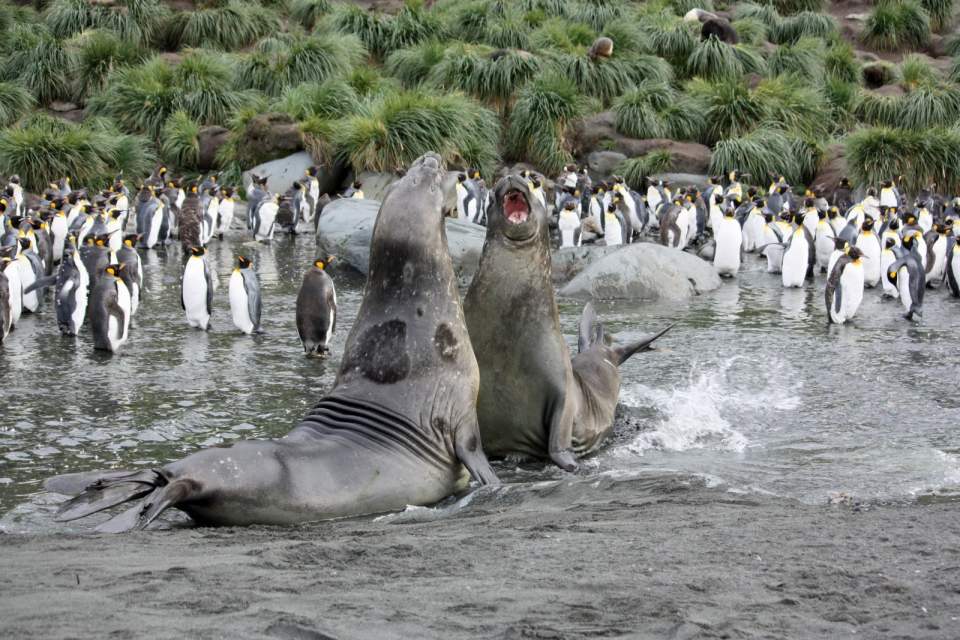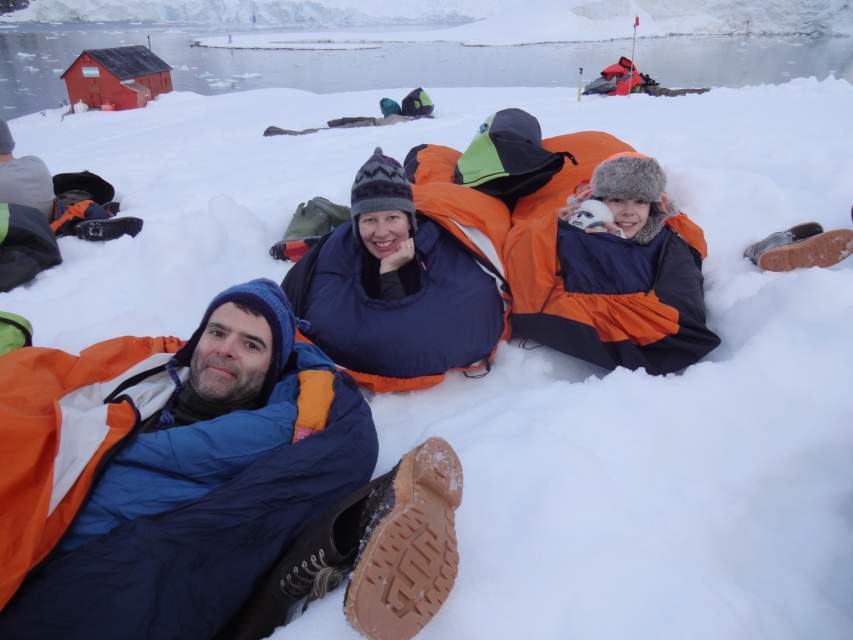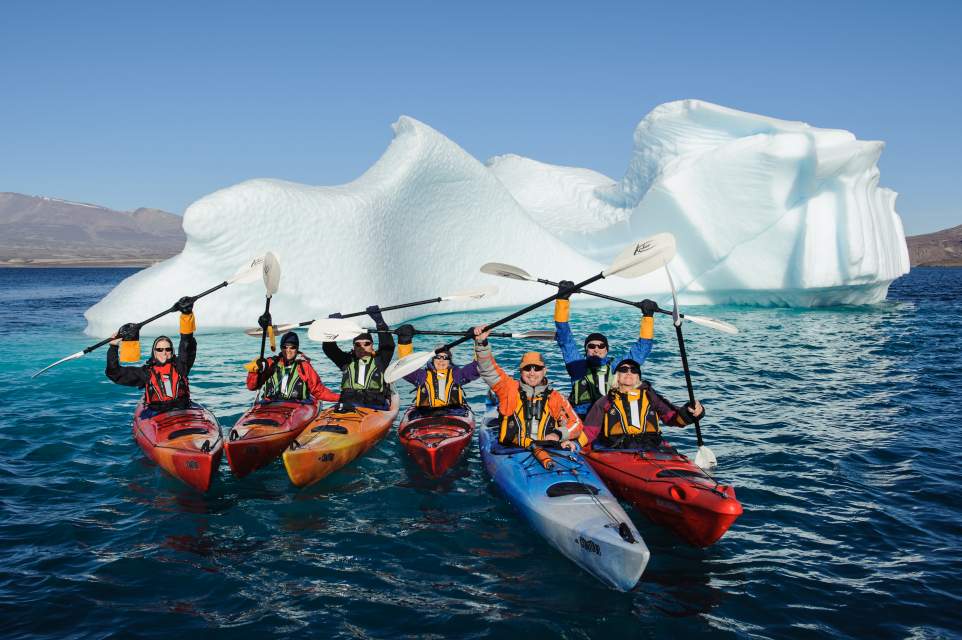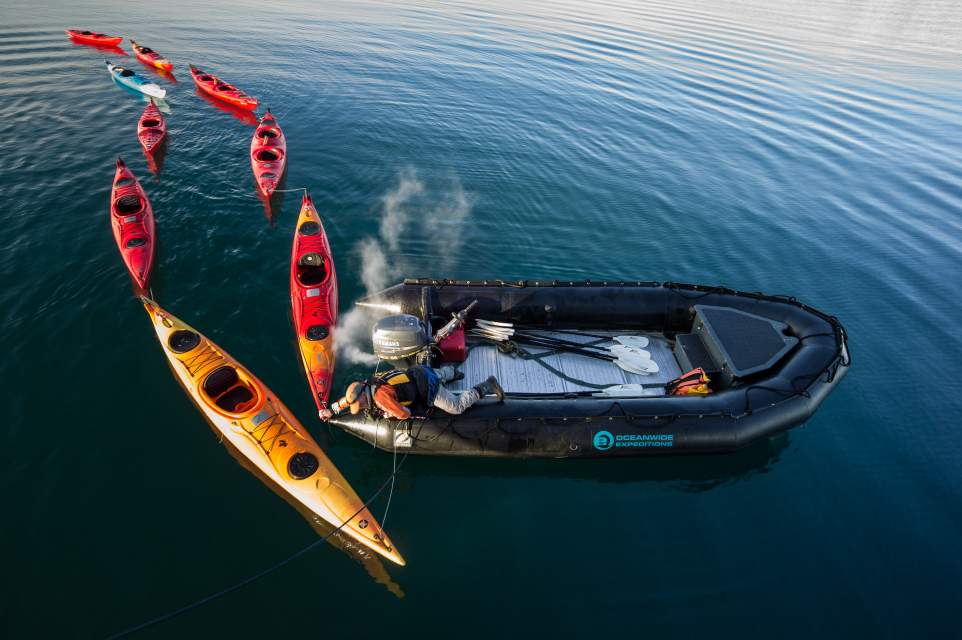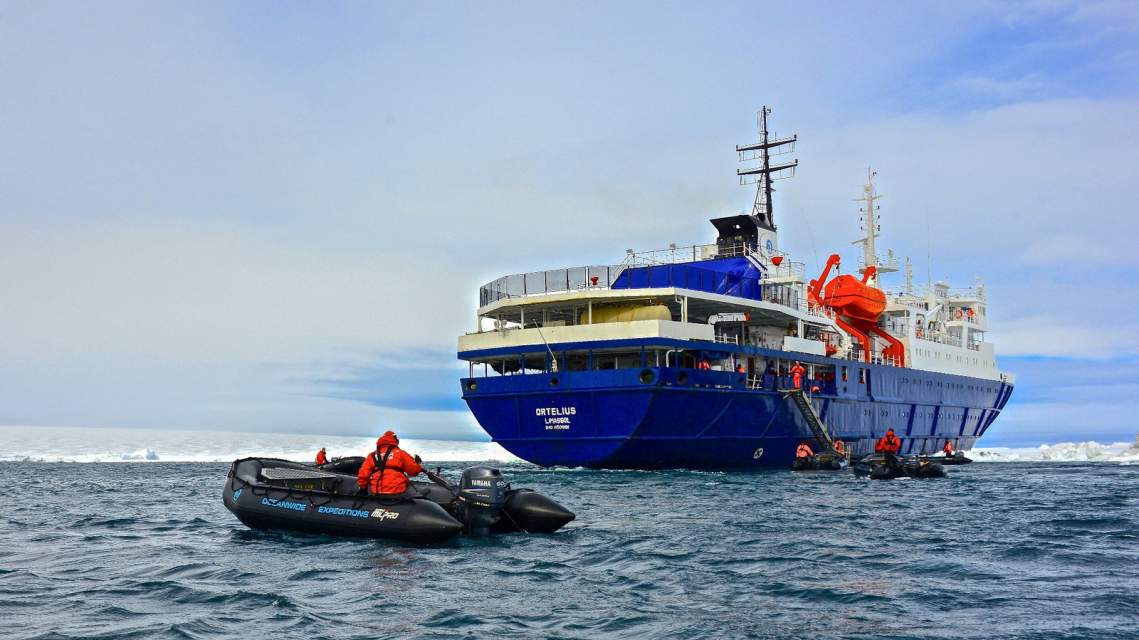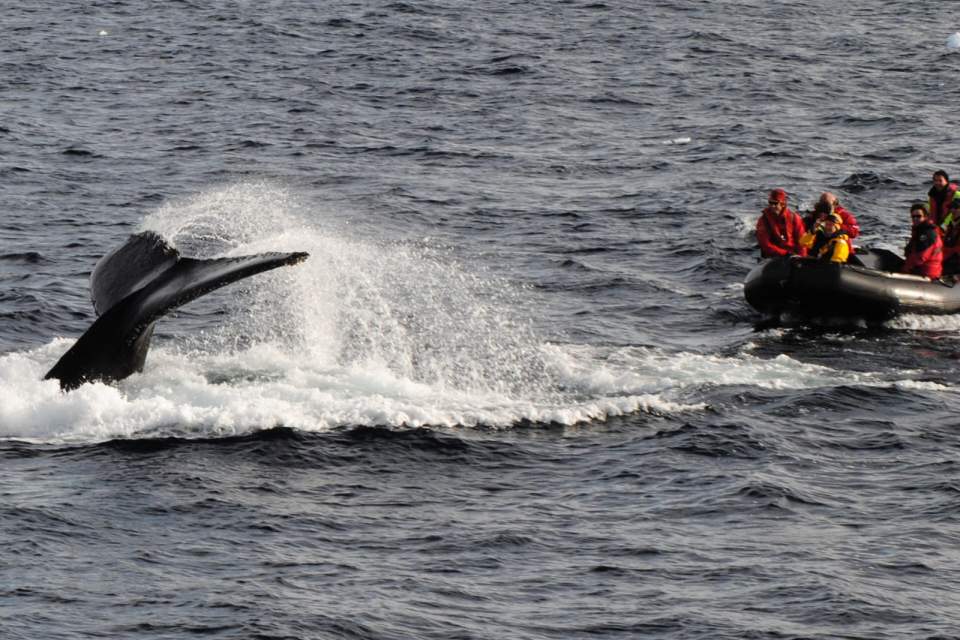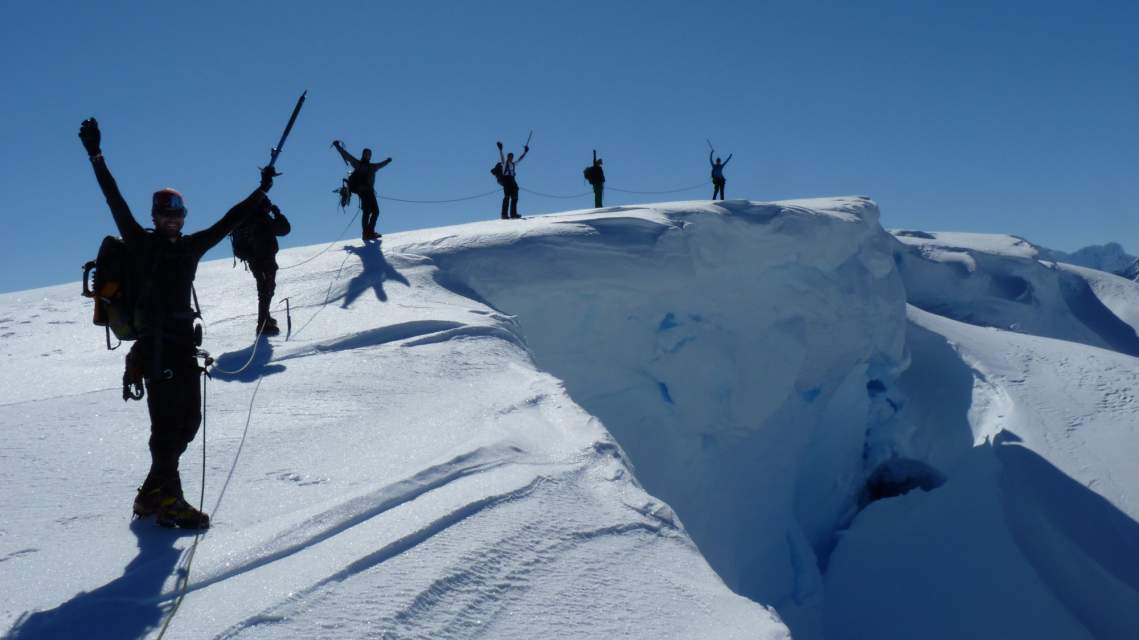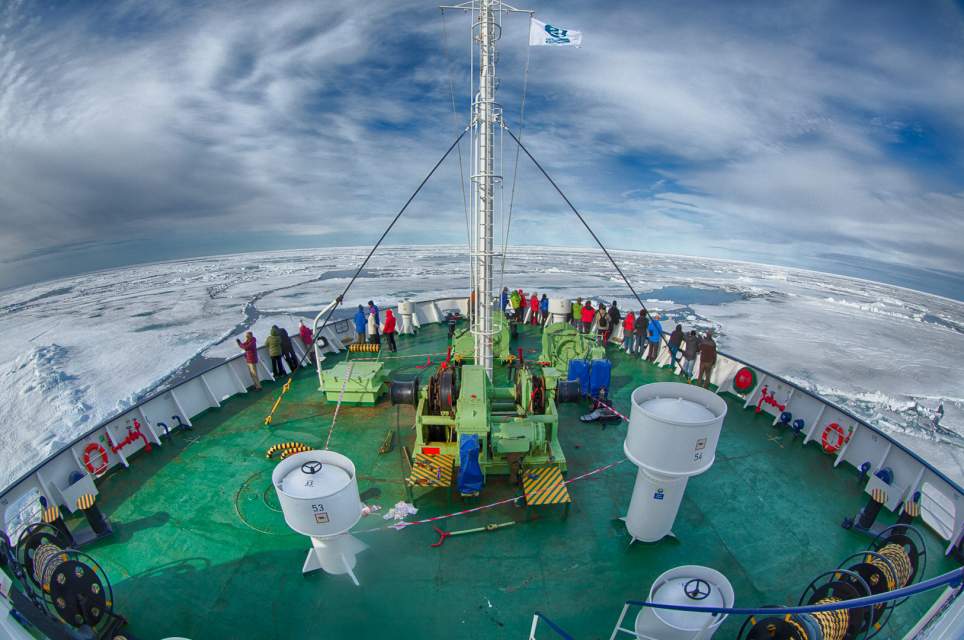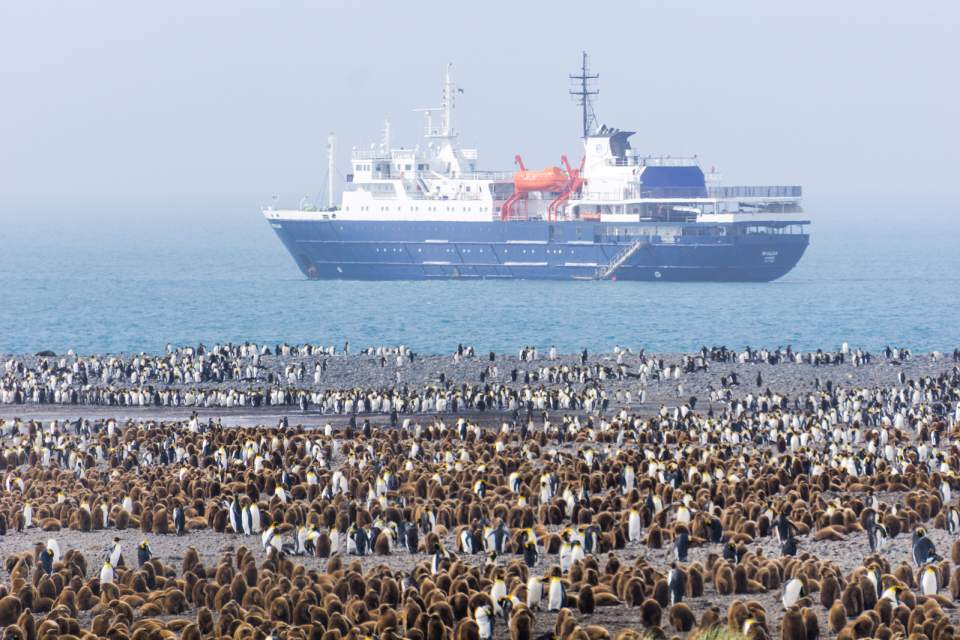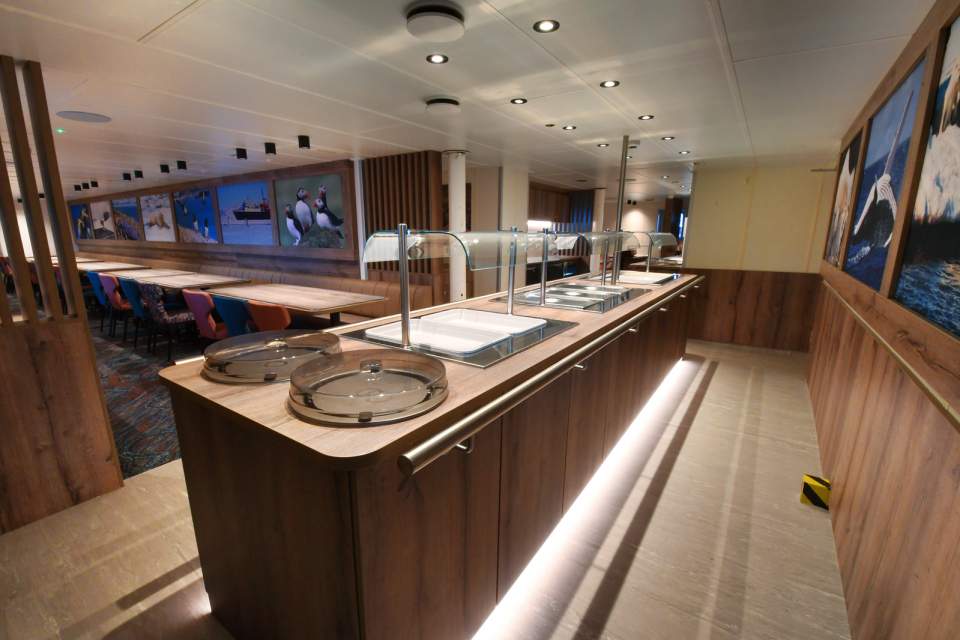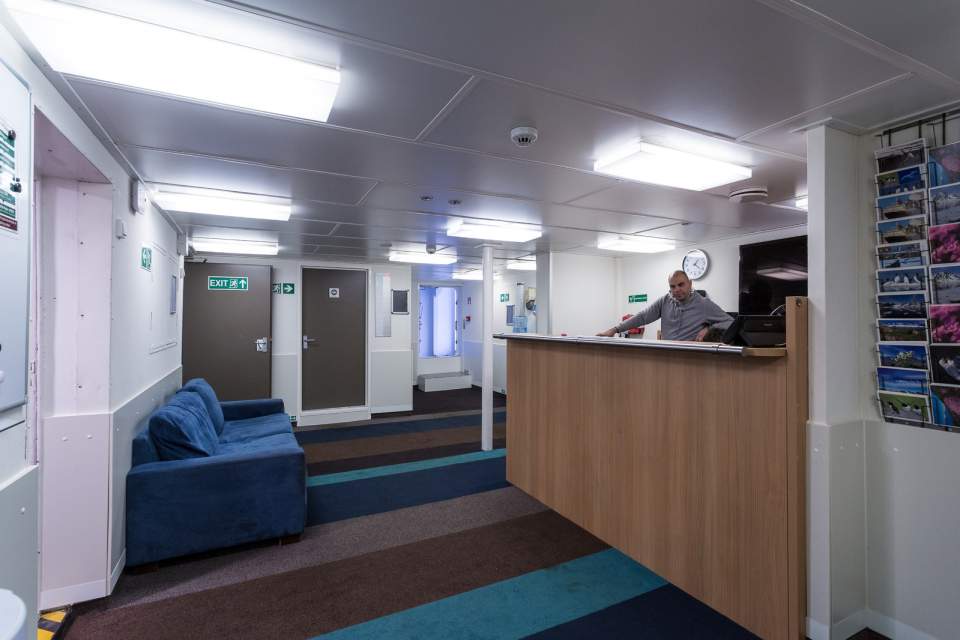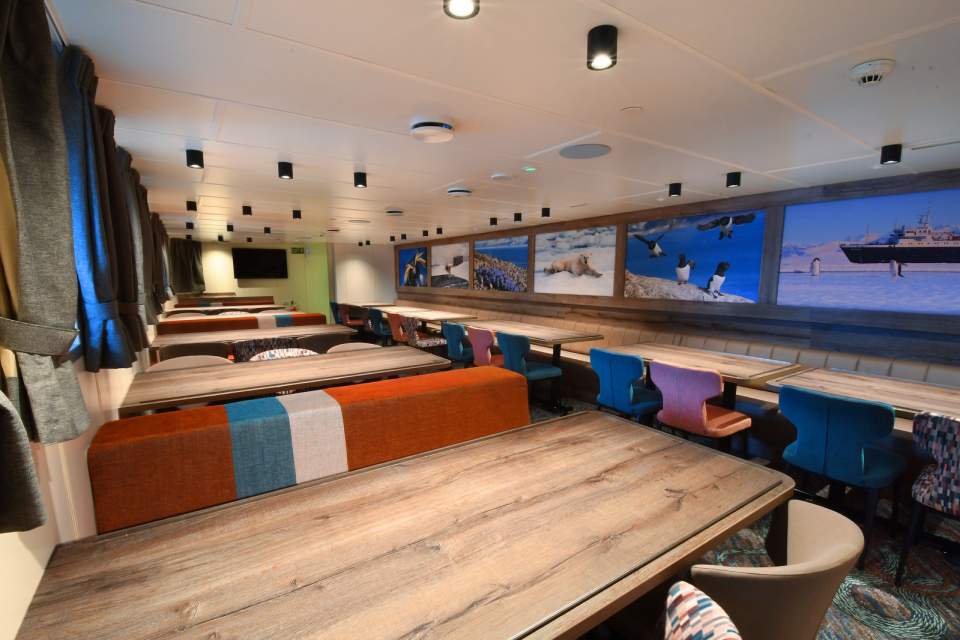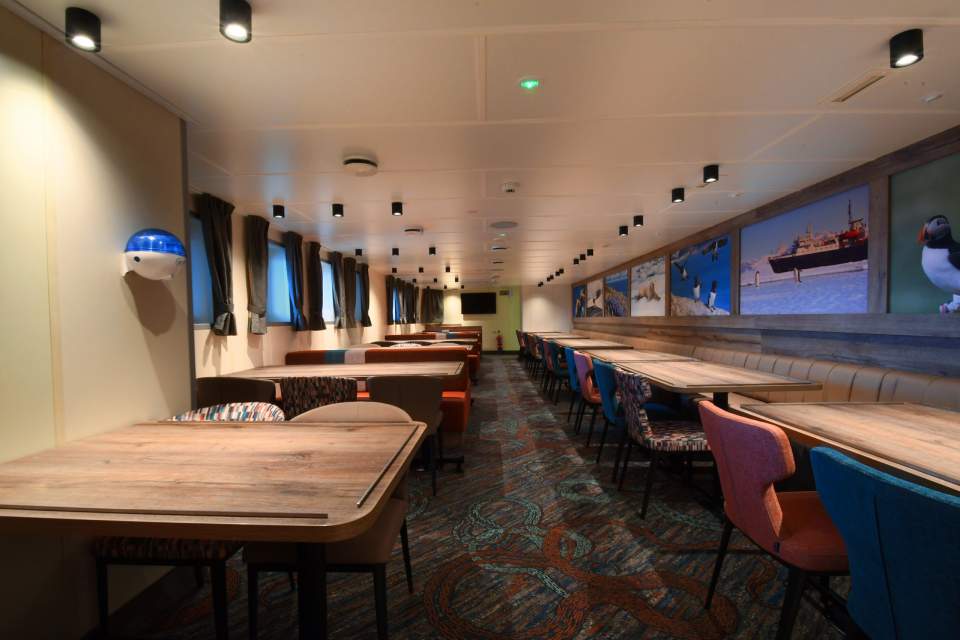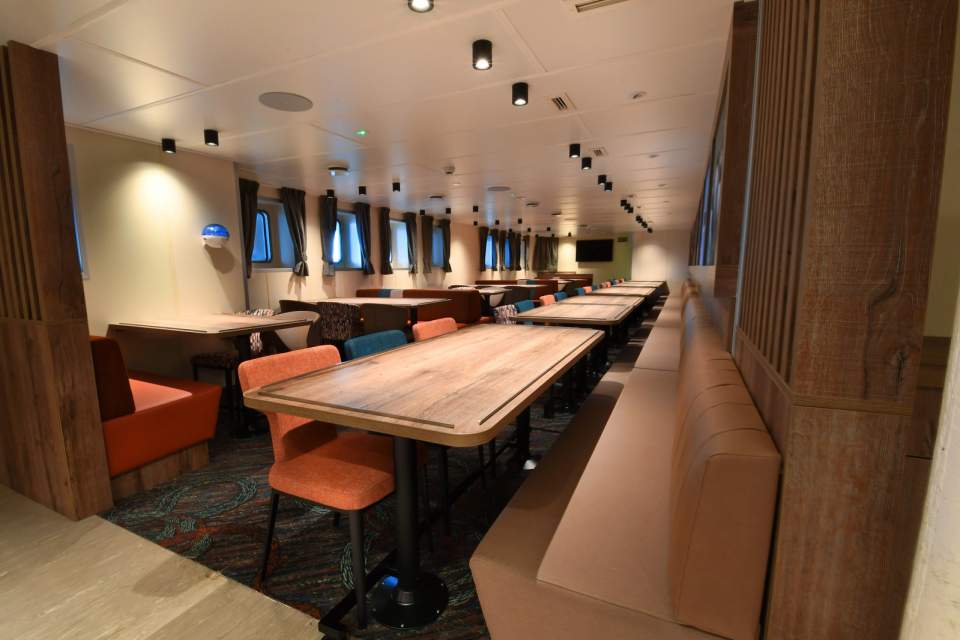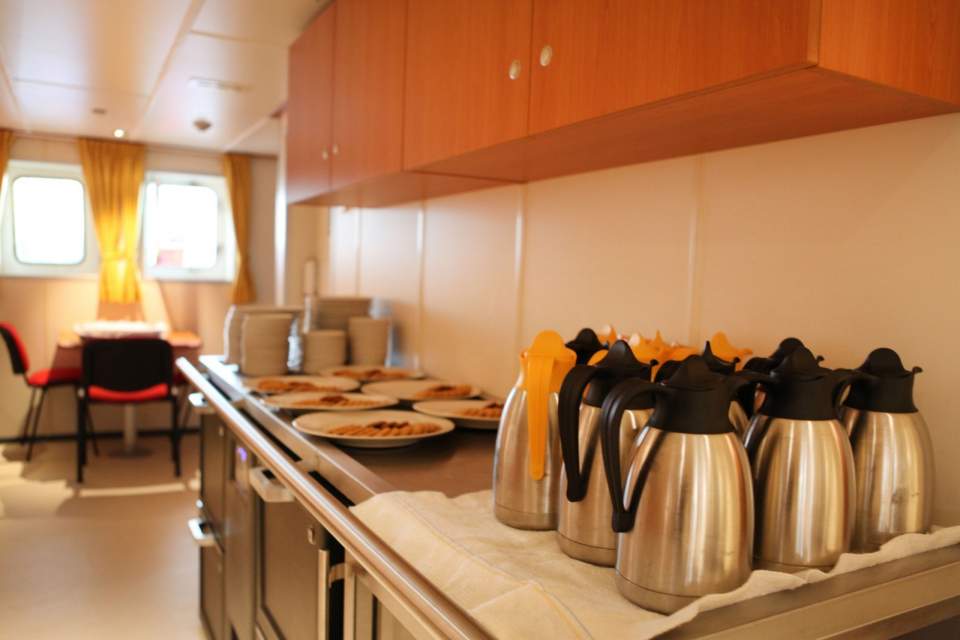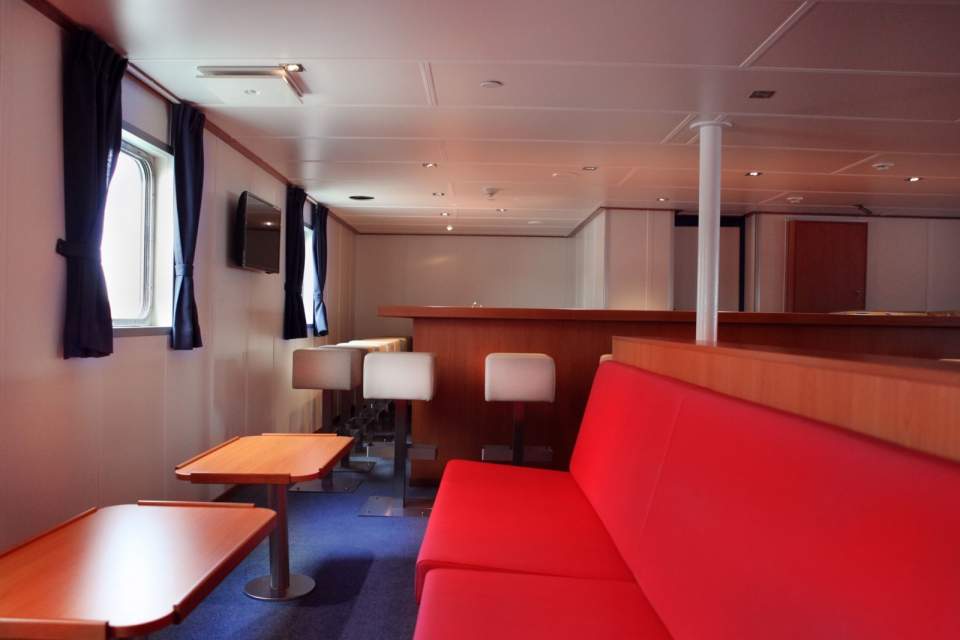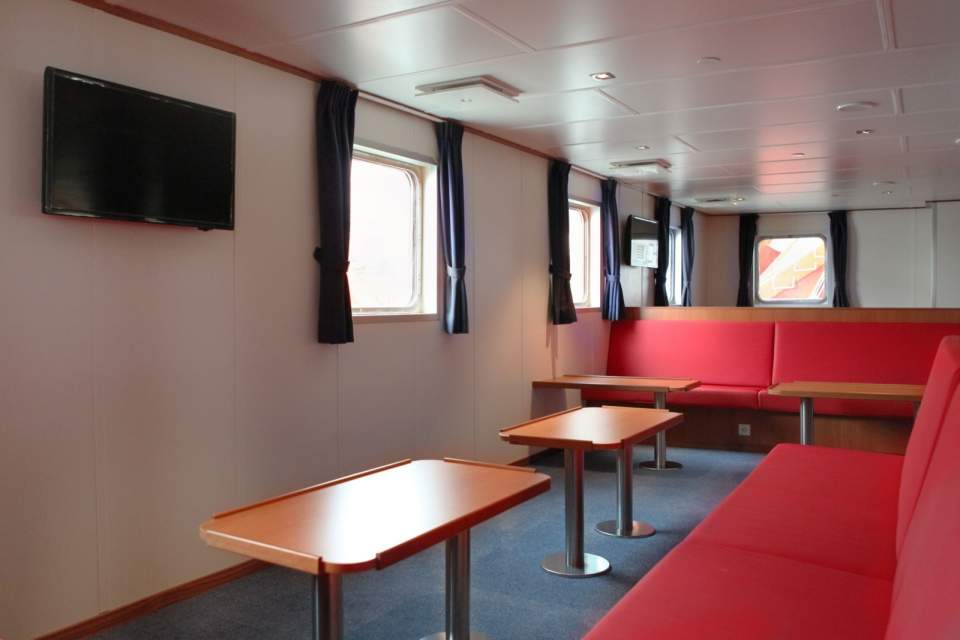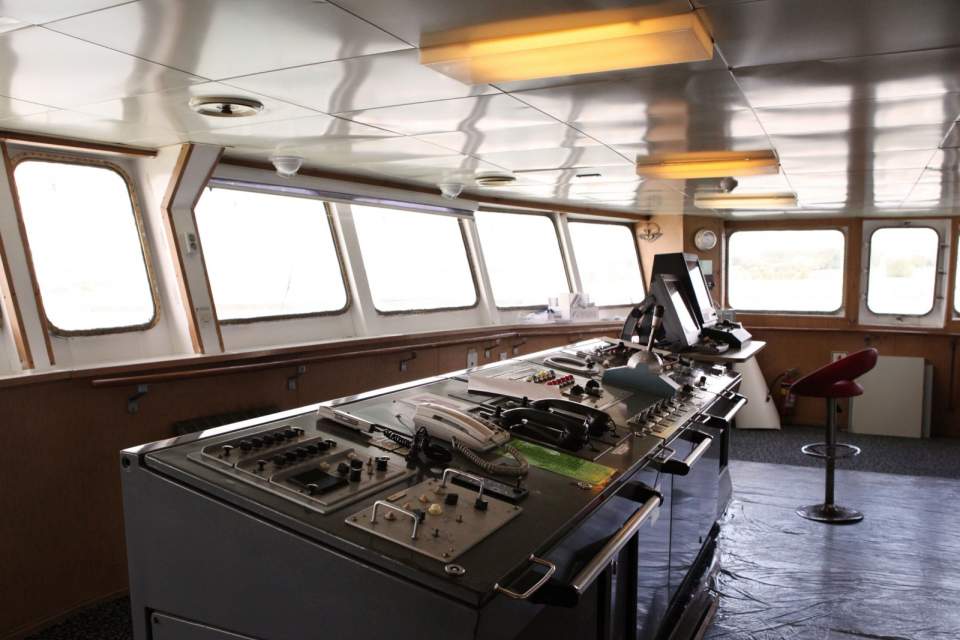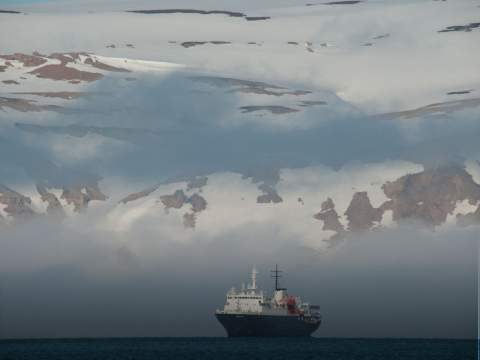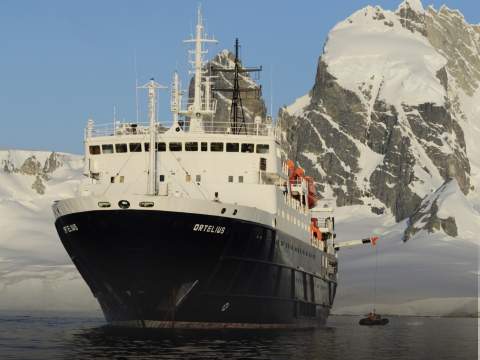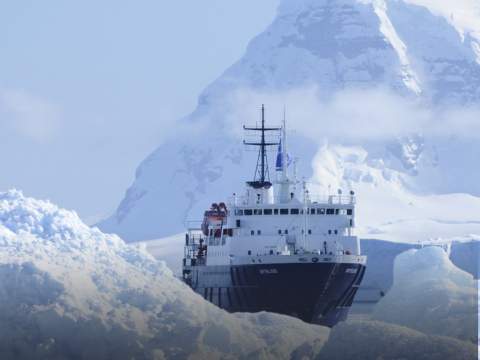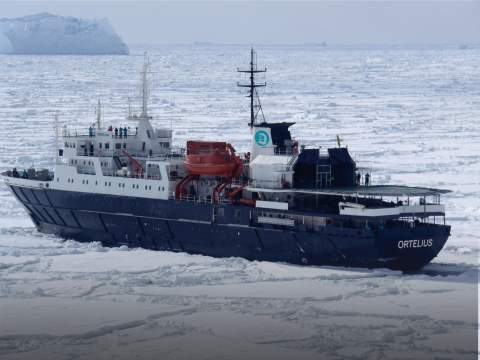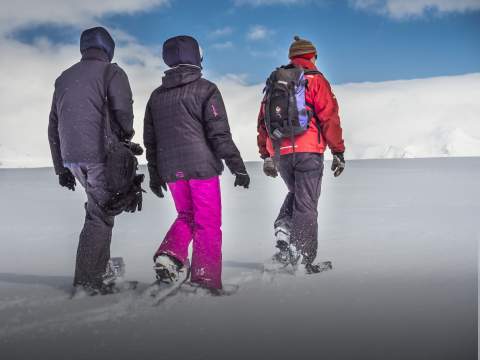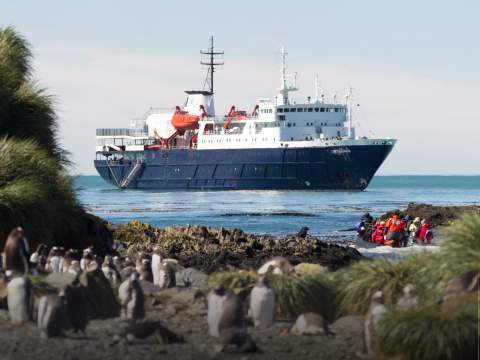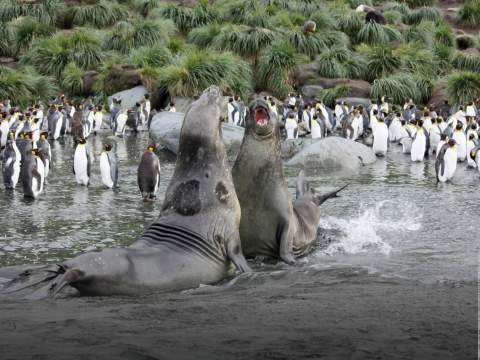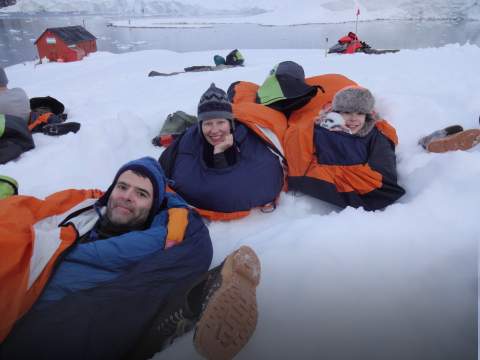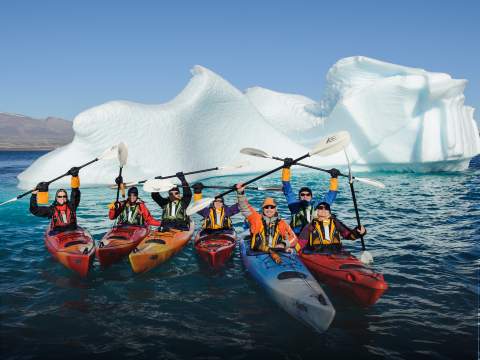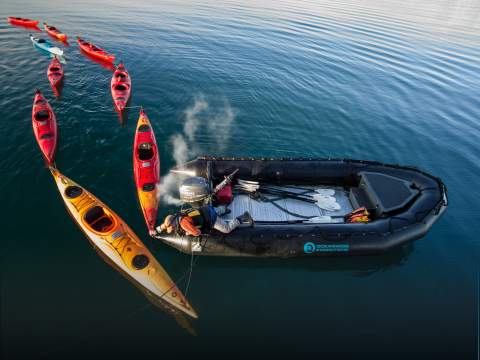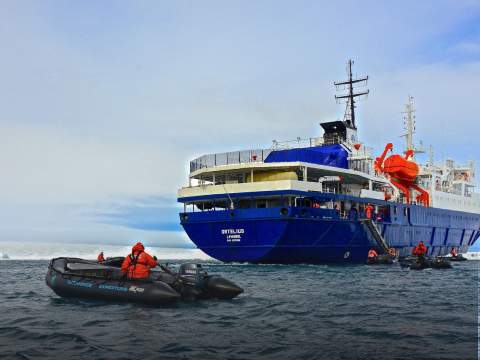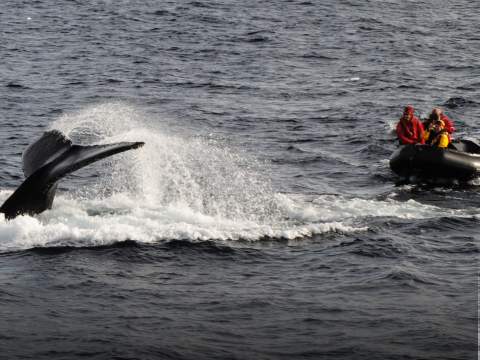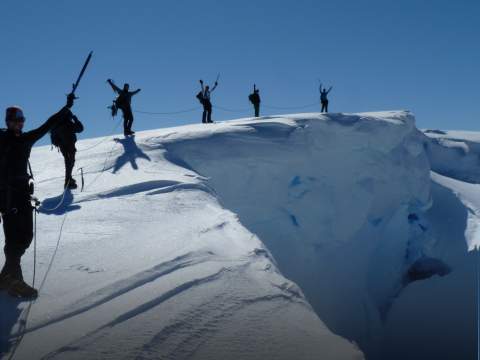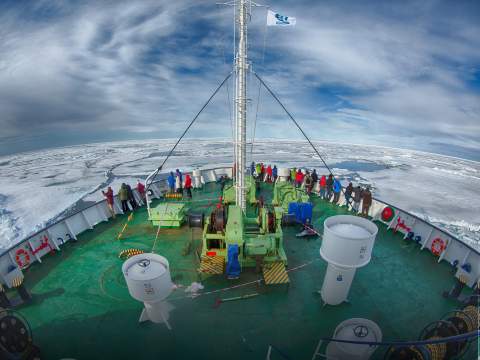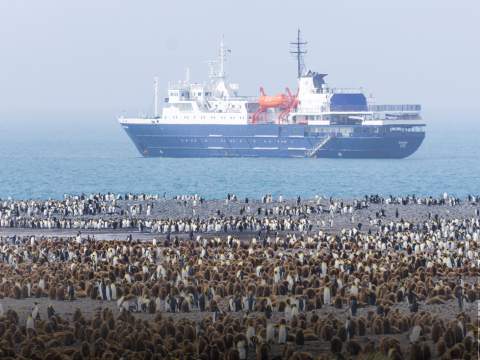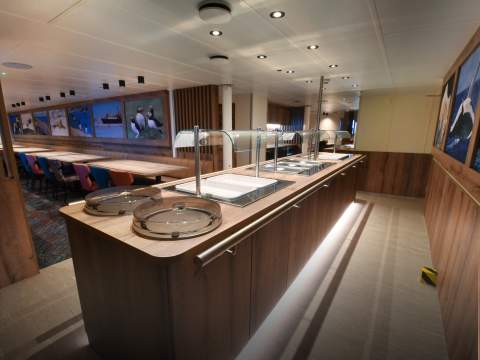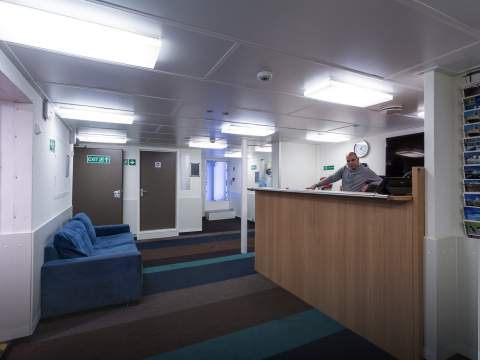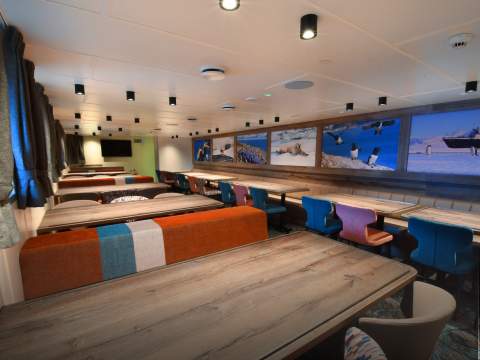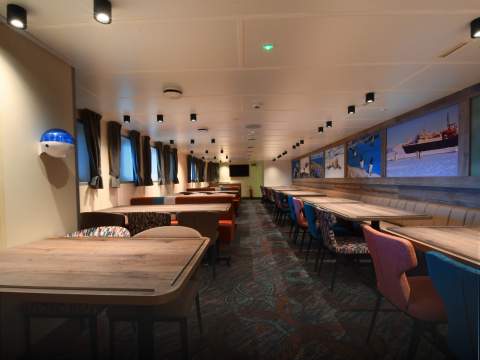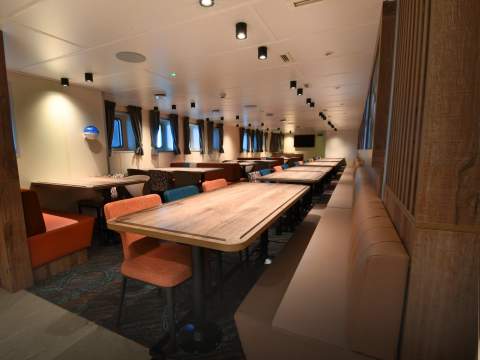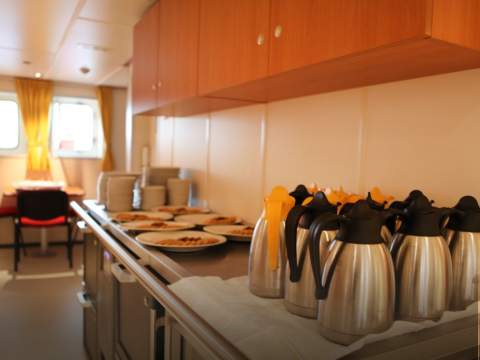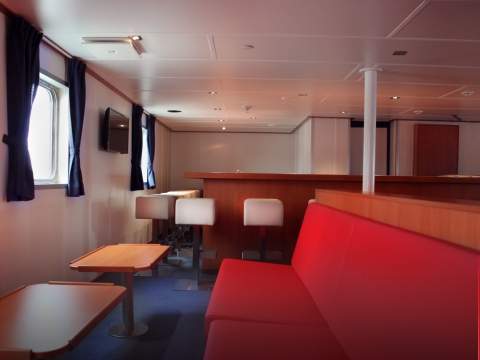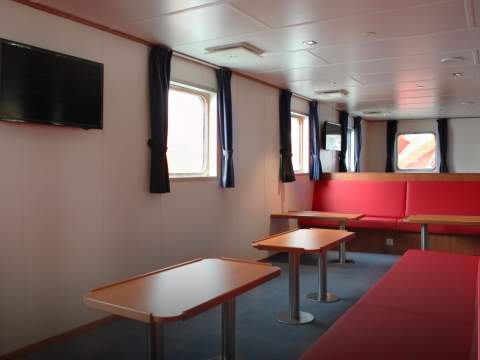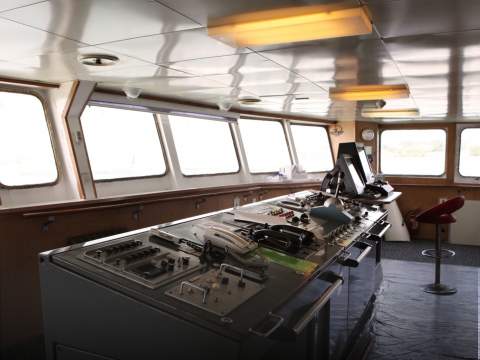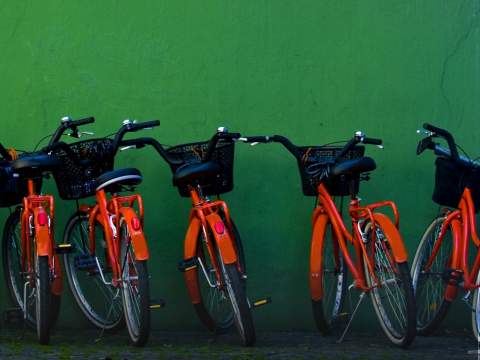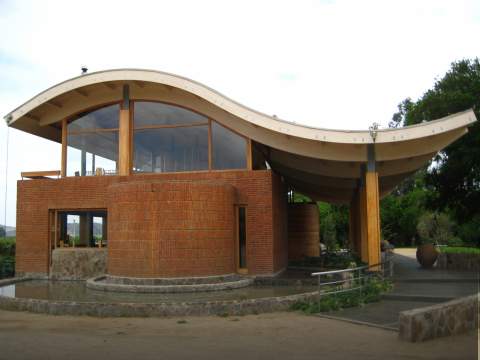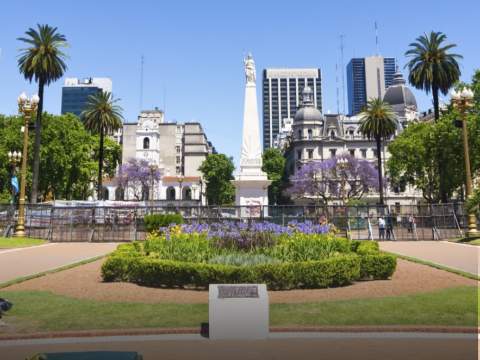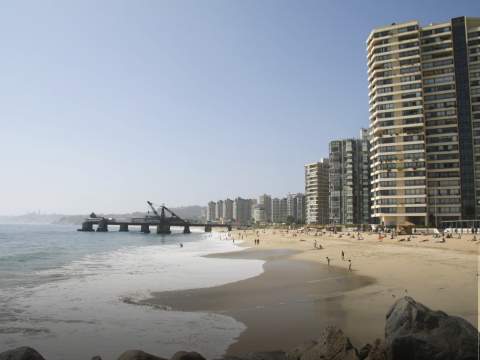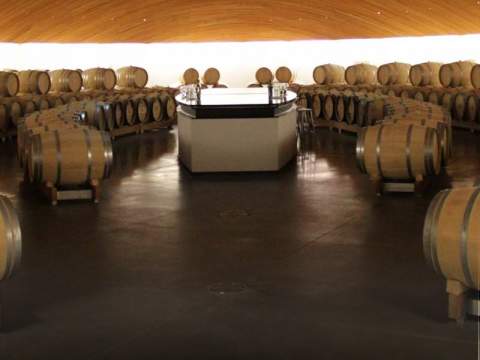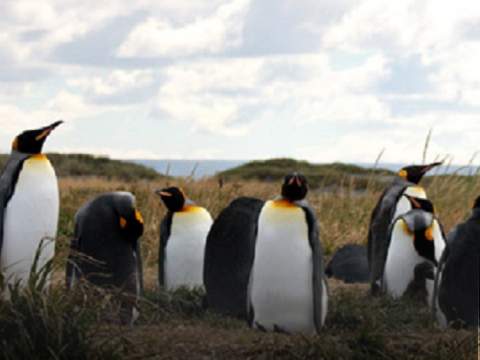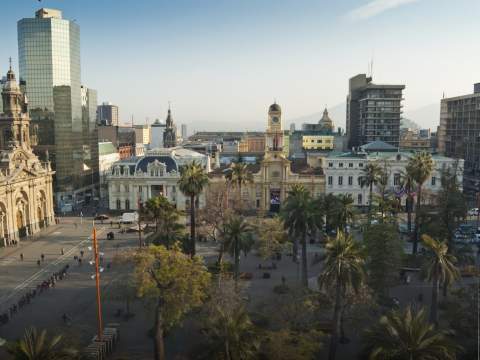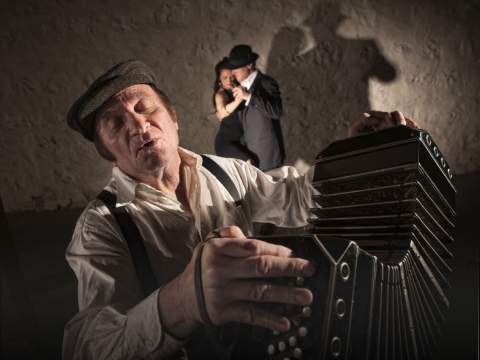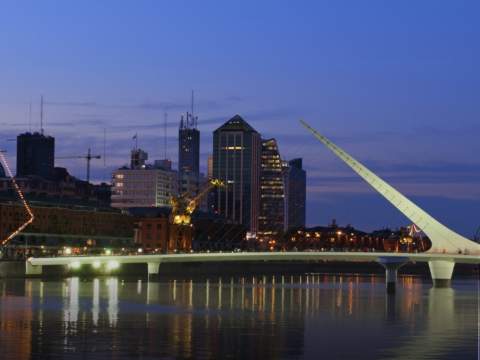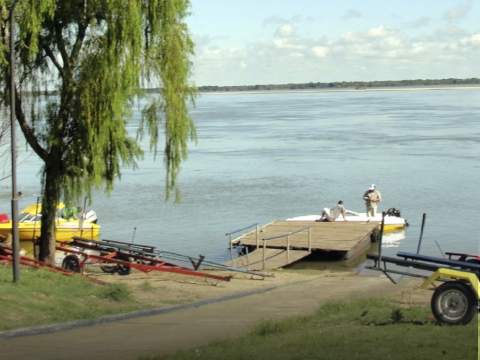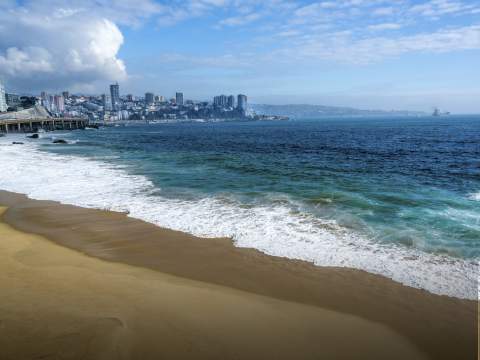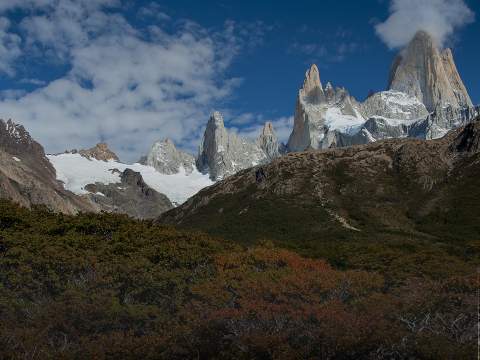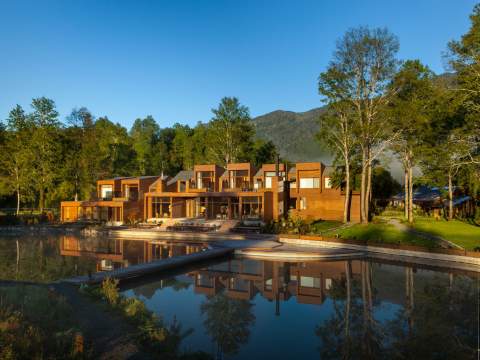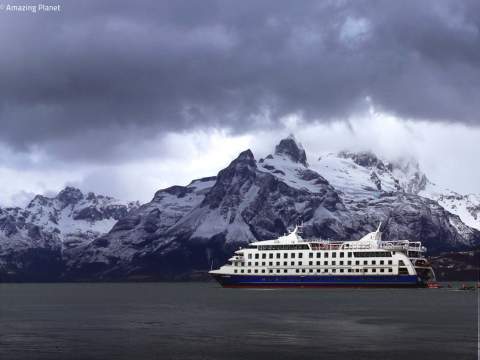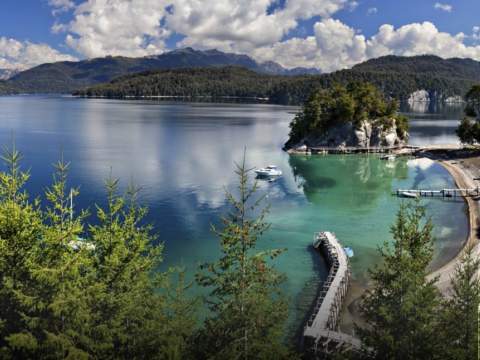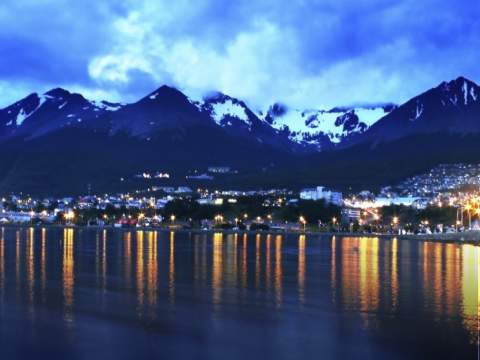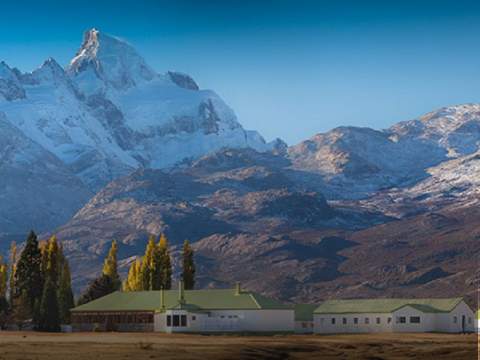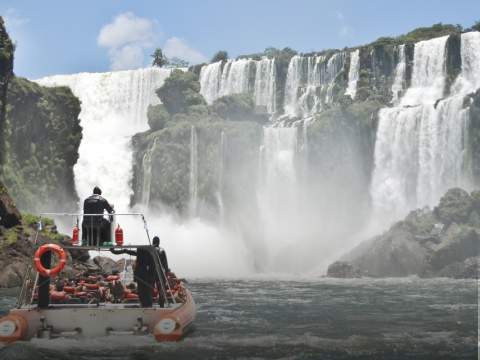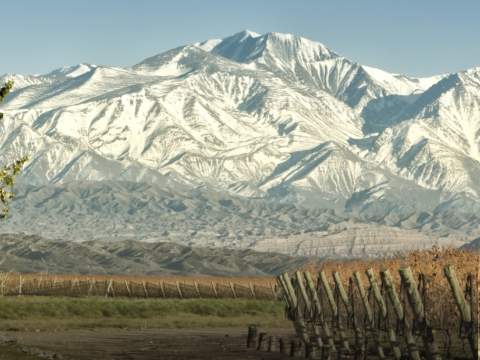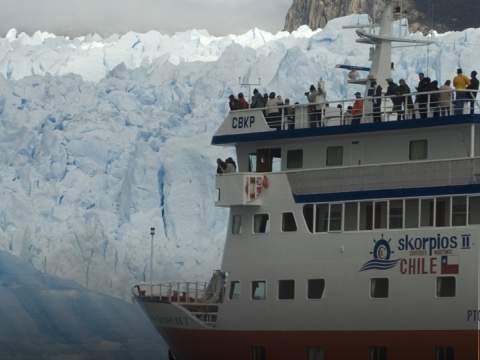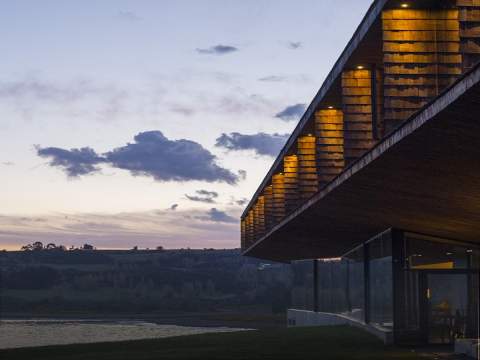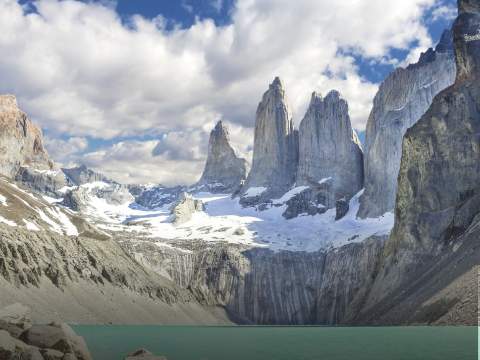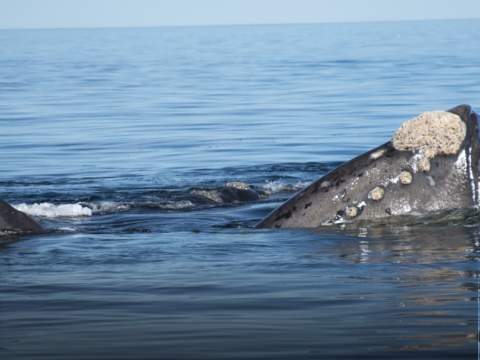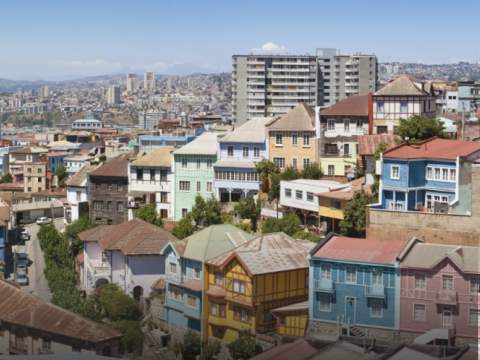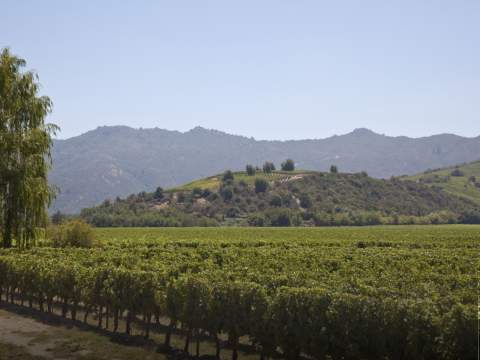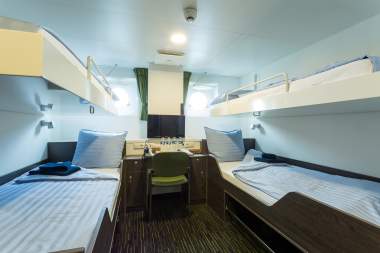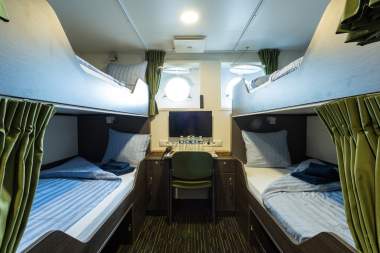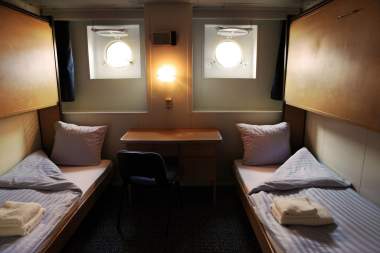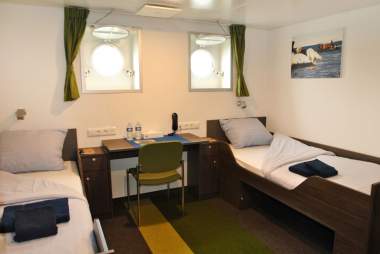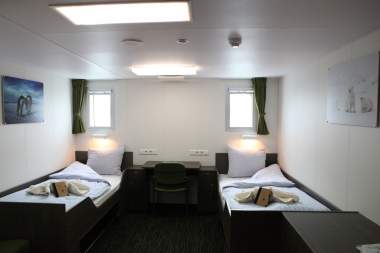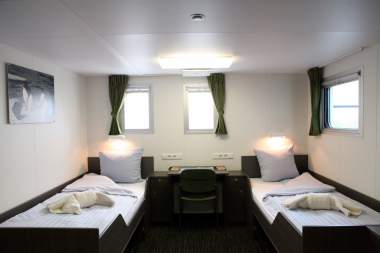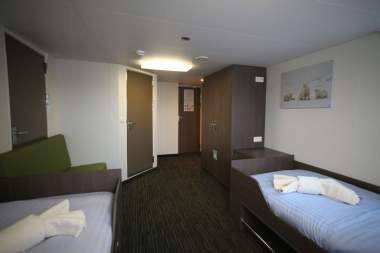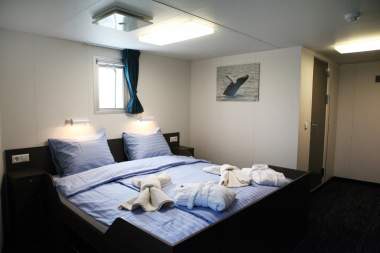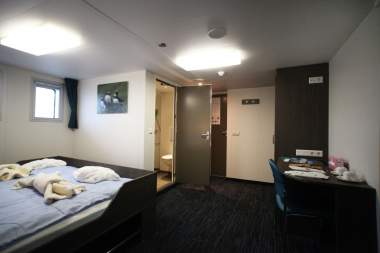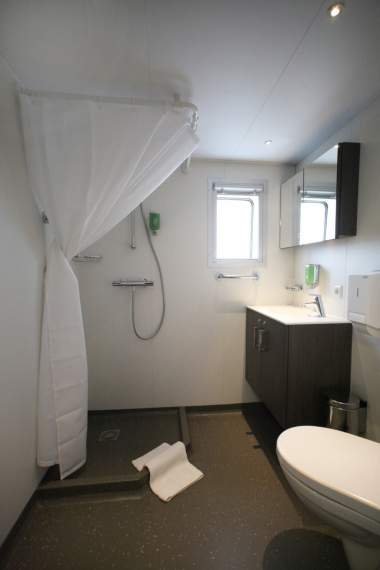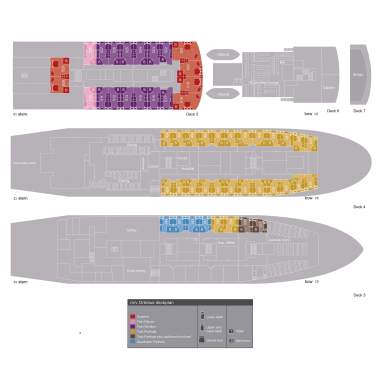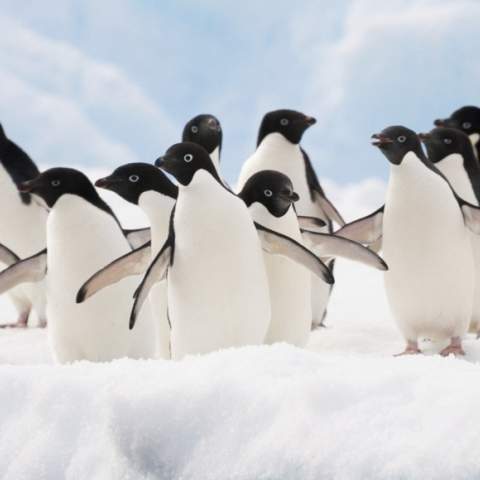Ortelius
Itinerary (Antarctic Peninsula - Polar Circle, Deep South Discovery & Whale Watching Voyage)
Itinerary (Falklands, South Georgia & Antarctica)
Itinerary (Polar Circle, Deep South Discovery Voyage )
Itinerary (Ross Sea Includes Helicopters )
Most Popular Antarctica Trips & Tours
| Trip | Price | Days | Highlights |
|---|---|---|---|
| Ocean Nova | $11,495 | 6 - 10 Days | Glaciers, Icebergs, Penguins, Whales, Kayaking, Hiking, Snowshoeing |
| Sea Spirit | $7,895 | 11 - 23 Days | Glaciers, Icebergs, Whales, Penguins, Hiking, Kayaking, Camping, Photography |
| Ushuaia | $5,460 | 10 - 20 Days | Glaciers, Icebergs, Whales, Penguins, Hiking |
- DAY 1: Ushuaia, Argentina - Embark
Welcome to Ushuaia, Tierra del Fuego, Argentina, the southernmost city in the world located in the shadow of the Andes and right on the Beagle Channel! Enjoy a morning at leisure. You may opt for a cruise on the Beagle Channel, a trek in Tierra del Fuego National Park, or visit a nearby historical estancia and museum. Please contact us for your extension options in Ushuaia. In the late afternoon, head to the port of Ushuaia where you will embark your Antarctic expedition vessel. Once onboard, you’ll check into your cabin and enjoy a welcome briefing as you sail through this scenic waterway. (D)
- DAYS 2-3: Drake Passage
The next two days are spent crossing the Drake Passage. Heading south, you’ll cross the Antarctic Convergence, arriving into the circum-Antarctic up welling zone. In this area you may see Wandering Albatrosses, Grey Headed Albatrosses, Black- browed Albatrosses, Light- mantled Sooty Albatrosses, Cape Pigeons, Southern Fulmars, Wilson’s Storm Petrels, Blue Petrels and Antarctic Petrels. (B,L,D)
- DAYS 4-8: Weddell Sea & South Shetland Islands
You’ll sail directly to the Weddell Sea, and if conditions permit, directly into the ice-clogged Antarctic Sound. The huge tabular icebergs will announce your arrival to the eastern side of the Antarctic Peninsula and with luck, your first Antarctic Continent landing will be at Brown Bluff, which is probably the most scenic spot in the entire northern tip of the Antarctic Continent with steep canyon walls and tumbling boulders, an ice-cap looming above, and beautiful volcanic creations. The scene is complete with thousands of Adelie penguins nesting on the slopes, and a few Gentoos mixed in for fun.
Though the final itinerary will depend on weather conditions and determined by the Expedition Leader on board, a typical itinerary in the Weddell Sea would include the use of helicopters to assist in attempts to find individual Emperor penguins on their way to or from the open water, as well as scenic flights over the area, and even helicopter landings on tabular ice-bergs and locations otherwise inaccessible so early in the season. Helicopter flights are a great contribution to the voyage as the west side of Antarctic Sound is an area rarely seen from the air. The scenery is stunning with landscapes of layered sandstones, lava flows, glaciers tumbling into the sea and ice-bergs and pack-ice as far as the eye can see. You can observe individual Emperor penguins and Adelie penguins on the ice floes; Cape, Snow and Giant petrels fly high in the sky while Kelp gulls, skuas and Wilson’s Storm petrels scavenge down below. The landscape is dominated by jagged mountains pierced through the ice-caps and walls of ice dropped onto the slopes below. Close to View Point in Duse Bay a beautiful helicopter flight over huge blue ice bergs and fast ice can also be made, where you will land on a rocky hillock close to an old refuge hut overlooking the bay. There will still be a lot of snow and ice but much of the intended walk on the Antarctic continent will be over a beautiful frost-shattered rock, almost entirely covered with the most fascinating lichen of all shapes and colors.
If the ice-situation allows us to go further into the Weddell Sea area, you will visit Devil Island and Vega Island to visit a large colony of Adelie Penguins and a magnificent view for those hikers who can make it to the top of the hill. Melting ice sometimes provides spectacular waterfall from the cliffs close to point ‘Well-Met’ and further south, you may also visit Seymour Island, where many fossils can be found. On your way north through the Antarctic Sound, you will continue to look out for Emperor penguins on the ice-floes and there may be a visit to the Argentinean station Esperanza on the Antarctic Continent or Gourdin Island, where you will find Chinstraps, Gentoo and Adelie penguins.
Your last day in Antarctica will be spent exploring the South Shetland Islands with a intended visits to Half Moon Island where you can see Chinstrap and Gentoo Penguins, various other bird-species and Southern Elephant Seals and Weddell seals. Early in the afternoon, your ship will sail to Deception Island, where you’ll have the last landing of your voyage at Pendulum cove or Whalers Bay. (B,L,D)
ALTERNATIVE PROGRAM IF THE ROUTE TO SNOW HILL ISLAND IS FREE OF MULTI-YEAR PACK-ICE (LESS THAN 50 % CHANCE): The use of helicopters has a great advantage and can support the expedition’s goal to reach the Emperor penguin colony, but the itinerary is ruled by the forces of nature, ice and weather conditions. If the conditions are favorable, the plan is to spend the first two days at the Emperor Penguin rookery. The helicopter operation will take a full day and the flight duration takes approximately 15 minutes. The helicopter can accommodate 6 passengers per helicopter flight. The landing point of the helicopters will be carefully chosen and crew will ensure that the Emperors are not disturbed or stressed by helicopter noise. Once you disembark the helicopter, you’ll continue on foot, walking 45 minutes, before experiencing a once in a lifetime moment: a rendezvous with the magnificent Emperor Penguins! Keep in mind that you are in the world’s most remote area and there are no guarantees, including a specific amount of helicopter time. Conditions may change rapidly, having its impact on the helicopter operation and passengers should understand and accept this. Safety is the greatest concern and no compromises can be made.
- DAYS 9-10: Drake Passage
As the expedition nears its end in the Antarctica Peninsula, you’ll head back to the open sea and sail through the Drake Passage back to Ushuaia. (B,L,D)
- DAY 11: Disembark Ushuaia - Home
You arrive in the morning in Ushuaia and disembark the vessel after breakfast, meeting your driver to transfer you to the Ushuaia Airport. (B)
Key: (B)reakfast (L)unch (D)inner
- DAY 1: Ushuaia, Argentina - Embark
PLEASE NOTE: 14-Day itineraries will spend one less day in Antarctica. Please inquire for details.
Welcome to Ushuaia, Tierra del Fuego, Argentina, the southernmost city in the world located in the shadow of the Andes and right on the Beagle Channel! Enjoy a morning at leisure. You may opt for a cruise on the Beagle Channel, a trek in Tierra del Fuego National Park, or visit a nearby historical estancia and museum. Please contact us for your extension options in Ushuaia. In the late afternoon, head to the port of Ushuaia where you will embark your Antarctic expedition vessel. Once onboard, you’ll check into your cabin and enjoy a welcome briefing as you sail through this scenic waterway. (D)
- DAYS 2-3: Drake Passage
The next two days are spent crossing the Drake Passage. Heading south, you’ll cross the Antarctic Convergence, arriving into the circum-Antarctic up welling zone. In this area you may see Wandering Albatrosses, Grey Headed Albatrosses, Black- browed Albatrosses, Light- mantled Sooty Albatrosses, Cape Pigeons, Southern Fulmars, Wilson’s Storm Petrels, Blue Petrels and Antarctic Petrels. As the journey across the Drake Passage ends, you’ll spot your first icebergs near the South Shetland Islands. The Master of your vessel may decide to sail the narrow English Strait between Robert Island and Greenwich Island or McFarlane Strait between Greenwich Island and Livingston Island, if the conditions are favorable. If so, you might be able to enter Antarctic waters in the late evening of the third day and see Aitcho Island in the South Shetlands. If the conditions do not allow for a maneuver through the English Strait, then you’ll continue sailing South of Livingston. (B,L,D)
- DAYS 4-12: Antarctic Peninsula & Polar Circle
You’ll start the first day full day in Antarctica waters with a possible landing at Hannah Point in the South Shetlands, where you will find a nice variety of Gentoo Penguins, Chinstraps and southern Giant Petrels, as well as Weddell and Elephant Seals hauling out on the beach. These volcanic islands or the South Shetlands are windswept and often shrouded in mist and fog, but do offer many subtle pleasures. There is a nice variety of flora (mosses, lichens and flowering grasses) and fauna.
On Deception Island you may visit Baily Head, home to a colony of ten thousands Chinstrap Penguins (please note this landing is not always guaranteed and is only possible in good weather conditions). Good walkers may hike from Baily Head over the ridge of the crater into Whalers Bay, while your ship braves its entrance into the crater through the spectacular Neptune’s Bellow into the ring of Deception Island. Deception itself is a sub-ducted crater, which opens into the sea, creating a natural harbor for the ship. Here you find hot springs, an abandoned whaling station, thousands of Cape Pigeons and many Dominican Gulls, Brown and South Polar Skuas and Antarctic Terns. Wilson’s Storm Petrels and Black-bellied Storm Petrels nest in the ruins of the whaling station in Whalers Bay.
On your way further South, you will sail to the Orne Islands with large colonies of Chinstrap Penguins and a beautiful view across the Gerlache Strait, or to Cuverville Island, a small precipitous island, nestled between the mountains of the Antarctic Peninsula and Danco Island. It contains a large colony of Gentoo Penguins and breeding pairs of Brown Skuas. In stunning Neko Harbour and Paradise Bay with its myriad icebergs and deep cut fjords, you’ll have the opportunity to set foot on the Antarctic Continent. You shall have the opportunity for zodiac cruising between the icebergs in the inner parts of the fjords. You’ll sail through the spectacular Lemaire Channel to Petermann Island offering Adelie Penguins and Blue-eyed Shags, and fair chances to encounter Humpback, Minke and Fin Whales. A possible landing at Pleneau Island could offer encounters with Elephant Seals as well!
You’ll continue south along the Argentine Islands to Crystal Sound, south of the Polar Circle. The landscape is very impressive with very high mountains and huge glaciers. At the Fish Islands, an attempt to land will be made amongst one of the southernmost Adelie Penguin and Blue-eyed Shag colonies in the Antarctic Peninsula. At Detaille Island, you’ll reach probably your farthest point south. Sailing north again through Neumayer Channel and Gerlache Strait, you’ll arrive at the Melchior Islands with a very beautiful landscape with icebergs, where we may encounter Leopard Seals, Crabeater Seals and whales. (B,L,D)
- DAYS 13-14: Drake Passage
As the expedition nears its end in the Antarctica Peninsula, you’ll head back to the open sea and sail through the Drake Passage back to Ushuaia. (B,L,D)
- DAY 15: Disembark Ushuaia
You arrive in the morning in Ushuaia and disembark the vessel after breakfast, meeting your driver to transfer you to the Ushuaia Airport. (B)
- DAY 1: Ushuaia, Argentina - Embark
PLEASE NOTE: 22-Day Itineraries spend an extra day each in the Falklands, South Georgia and Antarctica. 21-Day itinerararies begin in Puerto Madryn, and spend additional time sailing to the Falkland Islands. Please inquire for details.
Welcome to Ushuaia, Tierra del Fuego, Argentina, the southernmost city in the world located in the shadow of the Andes and right on the Beagle Channel! Enjoy a morning at leisure. You may opt for a cruise on the Beagle Channel, a trek in Tierra del Fuego National Park, or visit a nearby historical estancia and museum. Please contact us for your extension options in Ushuaia. In the late afternoon, head to the port of Ushuaia where you will embark your Antarctic expedition vessel. Once onboard, you’ll check into your cabin and enjoy a welcome briefing as you sail through this scenic waterway. (D)
- DAY 2: At Sea
The day is spent at sea as you sail toward the Falkland Islands. You may see several species of albatrosses, storm petrels, shearwaters and diving petrels following the ship. (B,L,D)
- DAYS 3-4: Falkland Islands
In the Falkland Islands (Malvinas) the plan is to spend the whole day on the fascinating western side of the archipelago. A hike along the shore of Carcass Island will give you views of Magellanic and Gentoo-Penguins, as well as close encounters with water fowl, night herons and passerines. You’ll head to Saunders where you will be able to observe four species of breeding penguins (Gentoo, King, Magellanic and Rockhopper), Black-browed Albatrosses and King Cormorants. In Stanley, the capital of the Falklands, you’ll get a glimpse of Falkland culture which is a fusion of South American characteristics and Victorian charm, and you will see a number of stranded clippers from a century ago. You will enjoy some free time to wander around the town on your own. (B,L,D)
- DAYS 5-6: At Sea
The next two days will be spent at sea as the vessel heads to South Georgia. Along the way, you will cross the Antarctic Convergence. Entering Antarctic waters, the temperature will drop by as much as 10 degrees Celsius in the time span of only a few hours. Near the Convergence, you will see a multitude of southern seabirds near the ship including species of Albatrosses, Shearwaters, Petrels, Prions and Skuas. (B,L,D)
- DAYS 7-10: South Georgia
This afternoon, enjoy your first landing site in South Georgia. Possible visits may include the bay of Elsehul, with its very active Fur seal breeding beach, as well as Right Whale Bay, Salisbury Plain, Godthul, St. Andrews Bay, Gold Harbour, Cooper Bay and Drygalski Fjord, depending on conditions. This will give you a good opportunity to see a wide spectrum of landscapes and wildlife. Possible encounters include the introduced Reindeer, Elephant seals, Fur seals, King and Macaroni Penguins. A particular highlight may be a visit to Prion Island, where you can witness the breeding efforts of the huge Wandering Albatross and enjoy watching their displays (the island is closed for visitors during breeding season from 20 Nov – 07 January).
You’ll experience some of the history of this area at Fortuna Bay, where you can follow in the footsteps of the great British Explorer Ernest Shackleton and hike over to Stømness Bay. There and at Grytviken you’ll see an abandoned whaling village, where King Penguins now walk in the streets and seals have taken over the buildings. At Grytviken you will visit the Whaling History Museum as well as Shackleton´s grave. Depart South Georgia in the afternoon of your last day there. (B,L,D)
- DAY 11: At Sea
Today you are at sea, where the ship is again followed by a multitude of seabirds. At this point, you may begin to encounter sea-ice and it is at the ice-edge where you might have a chance to see some high-Antarctic species like the McCormick Skua and Snow Petrel. (B,L,D)
- DAY 12: South Orkney Islands
Today you arrive at the South Orkney Islands where, weather permitting, you will visit to Orcadas station, an Argentinean base. The friendly base personnel will show you their facilities and you can enjoy the wonderful views of the surrounding glaciers. (B,L,D)
- DAY 13: At Sea
Today is the last day at sea before you reach the Antarctic Peninsula. (B,L,D)
- DAYS 14-16: Antarctic Peninsula
As you sail into the Weddell Sea through the ice-clogged Antarctic Sound, you will see huge tabular icebergs announcing your arrival to the eastern side of the Antarctic Peninsula. At Brown Bluff, you may set foot on the Continent for the first time during your expedition, and in good sailing conditions, an opportunity to extend your time in the Weddell Sea will be possible. The next few days will be spent exploring visitor sites offering a wide variety of landscapes, icescapes, wildlife and historical opportunities.
Possible visits include Paulet Island with a million pairs of Adelie Penguins and the remains of the Nordenskjöld expedition, and Cuverville Island in the Errera Channel, with its large colony of Gentoo Penguins and breeding pairs of Brown Skuas. You will explore Charlotte Bay, on the mountainous west coast of Graham Land, with its nunataks rising through the ice. Charlotte Bay is often filled with icebergs where many seals on ice floes, and occasional, kelp gulls, skuas, shags, or penguins are also on display. In Wilhelmina Bay you will admire the rugged ice coated mountains of the Arctowski Peninsula, and continue on through the spectacular Neumayer Channel, while having chances of seeing Humpback and Minke Whales. Another continental landing is possible at stunning Neko Harbour in Andvord Bay.
In the South Shetlands, your ship will brave the entrance of the spectacular Neptune’s Bellow into the ring of Deception Island. Deception itself is a sub-ducted crater, which opens into the sea, creating a natural harbor for the ship. Here you’ll find hot springs, an abandoned whaling station, thousands of Cape Pigeons and many Dominican Gulls, Brown and South Polar Skuas and Antarctic Terns. Wilson’s Storm Petrels and Black-bellied Storm Petrels nest in the ruins of the whaling station in Whalers Bay. From here, you will sail through the Shetland Islands (Half Moon) to the open sea with direction Ushuaia. (B,L,D)
- DAYS 17-18: Drake Passage
As the expedition nears its end in the Antarctica Peninsula, you’ll head back to the open sea and sail through the Drake Passage back to Ushuaia. (B,L,D)
- DAY 19: Disembark - Ushuaia
You arrive in the morning in Ushuaia and disembark the vessel after breakfast, meeting your driver to transfer you to the Ushuaia Airport. (B)
Key: (B)reakfast (L)unch (D)inner
Weather
When to Visit- jan
- feb
- mar
- apr
- may
- jun
- jul
- aug
- sep
- oct
- nov
- dec
You may also wish to schedule your trip according to what wildlife activities you are likely to observe at different points during the season, details below:
o Late October and November: The early part of the season showcases a number of highlights. Landing sites are at their most pristine. The possibility of seeing sea ice is present early on, before it breaks up later on in the season. Late October to early November sees Adélie, Chinstrap and Gentoo adult penguins and Antarctic-breeding seabirds starting to come ashore to their breeding sites where they commence courtship rituals and nest building. Shortly thereafter eggs are laid and incubated. Emperor penguins can be seen on the frozen Weddell Sea (visited occasionally by ice-strengthened expedition ships on special itineraries).
Spring flowers begin blooming in the Falkland Islands (Islas Malvinas) and elephant seals are actively courting in South Georgia. South Georgia's female king penguins lay their eggs in November and the parents can be seen "carrying" eggs on their feet so that the parent can shuffle around the colony while the other adult goes out to sea to feed. "Oakum Boys" — king penguin chicks from the previous season — can also be seen in the rookeries. Fur seals litter the beaches in South Georgia with the males aggressive and ready to mate.
o December and January: The increased number of daylight hours brings exceptional opportunities for photographers and non-photographers alike, and the expeditions make the most of the summer weather and continuous hours of daylight. Research activity in the Peninsula at the scientific bases is at its peak. Penguin chicks begin hatching in the Falklands (Islas Malvinas); followed by hatchings in mid- to late-December at sites in the Antarctic Peninsula. Some 30 days after hatching, penguin chicks can be found in "crèches," resembling a nursery of sorts, which leaves both adults free to replenish their food supply. An exciting time of this part of the season is when the parent returns with food and the hungry chicks are persistent in being fed, running after the parent (or any adult penguin with food) in a "feeding chase." Whale sightings of baleen and toothed whales escalate in the Peninsula area. Seal pups can be seen on the beaches in South Georgia. Sea ice is also beginning to break up which allows for the possibility to begin to access to rarely visited sites in the Weddell Sea, Ross Sea and within the Antarctic Circle.
o February and March: Sightings of whales are at their peak in the Peninsula and an increasing number of fur seals can be found along the Peninsula and offshore islands. Young fur seals are also quite playful in South Georgia. Penguin colonies are very active with the penguin chicks beginning their molt - losing their fuzzy down and developing their adult plumage. During this timeframe, the parents will abandoned their chicks, and return out to sea to feed and fatten up for their own molting stage. Most colonies (Adélie, Chinstrap and Gentoo) are nearly vacated by the end of February to early March. Blooming snow algae is prevalent and receding pack ice has reached its peak for the season, allowing for easier exploration within the Weddell Sea, Ross Sea and Antarctic Circle.
Maps
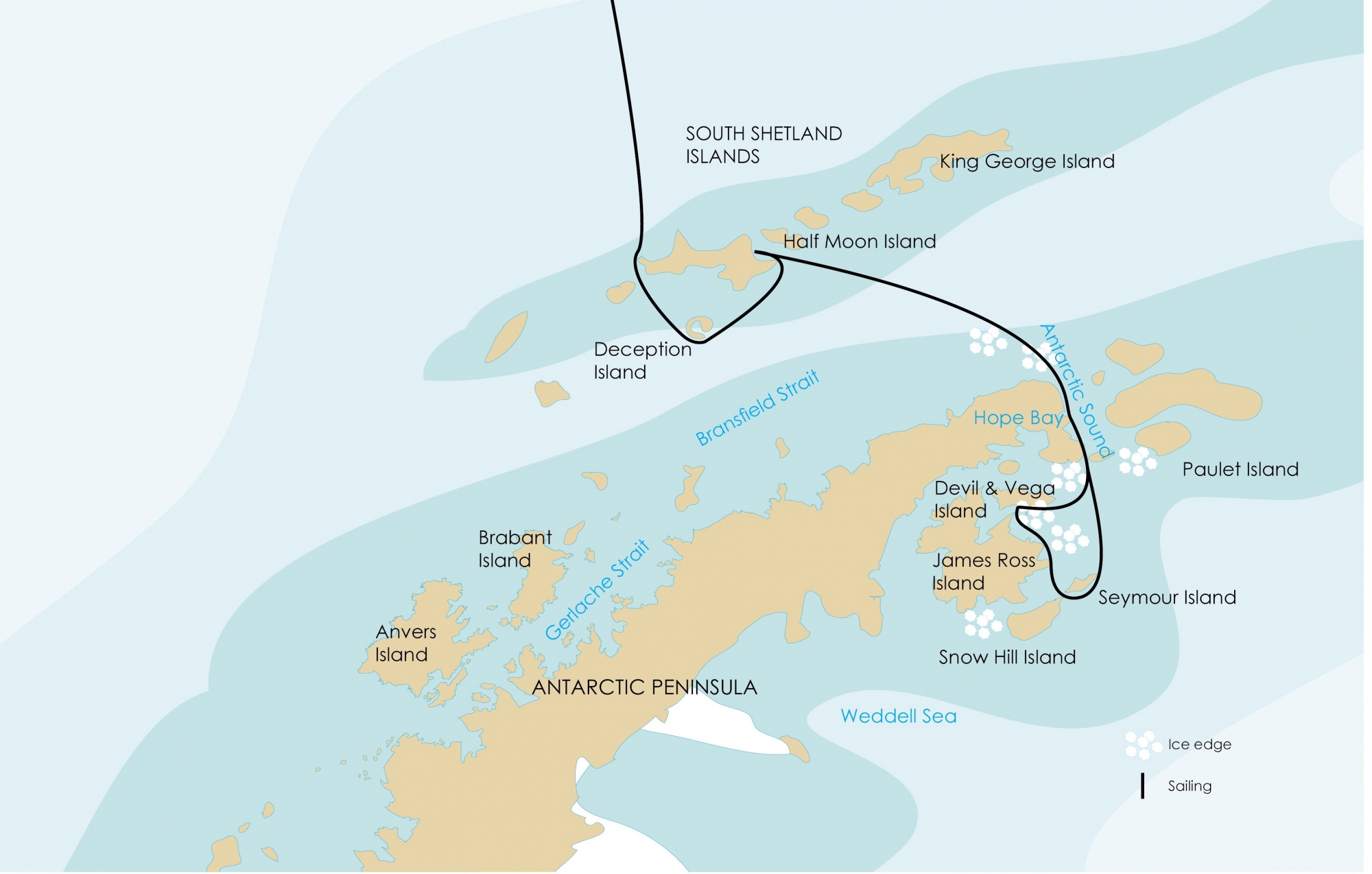
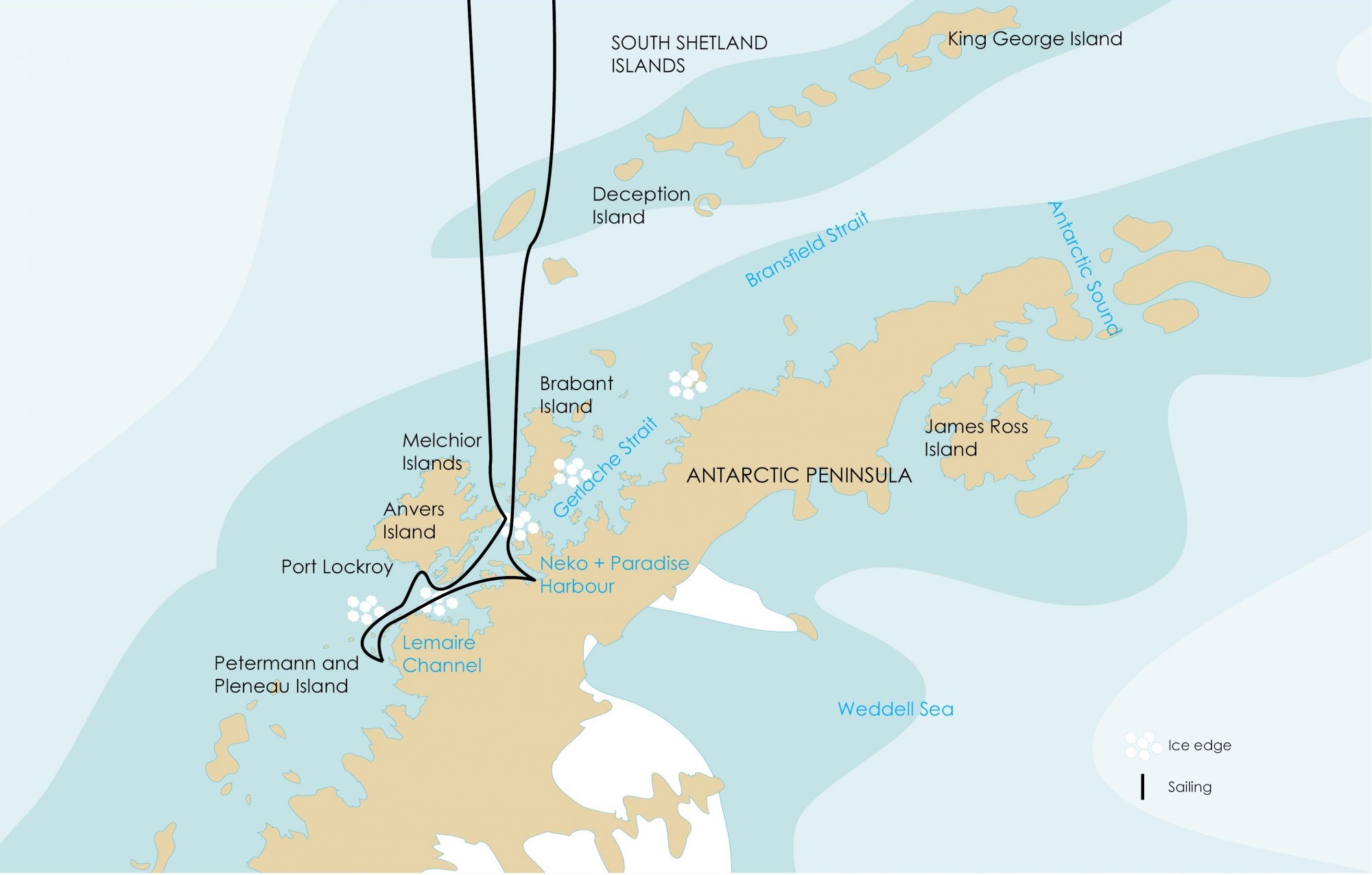
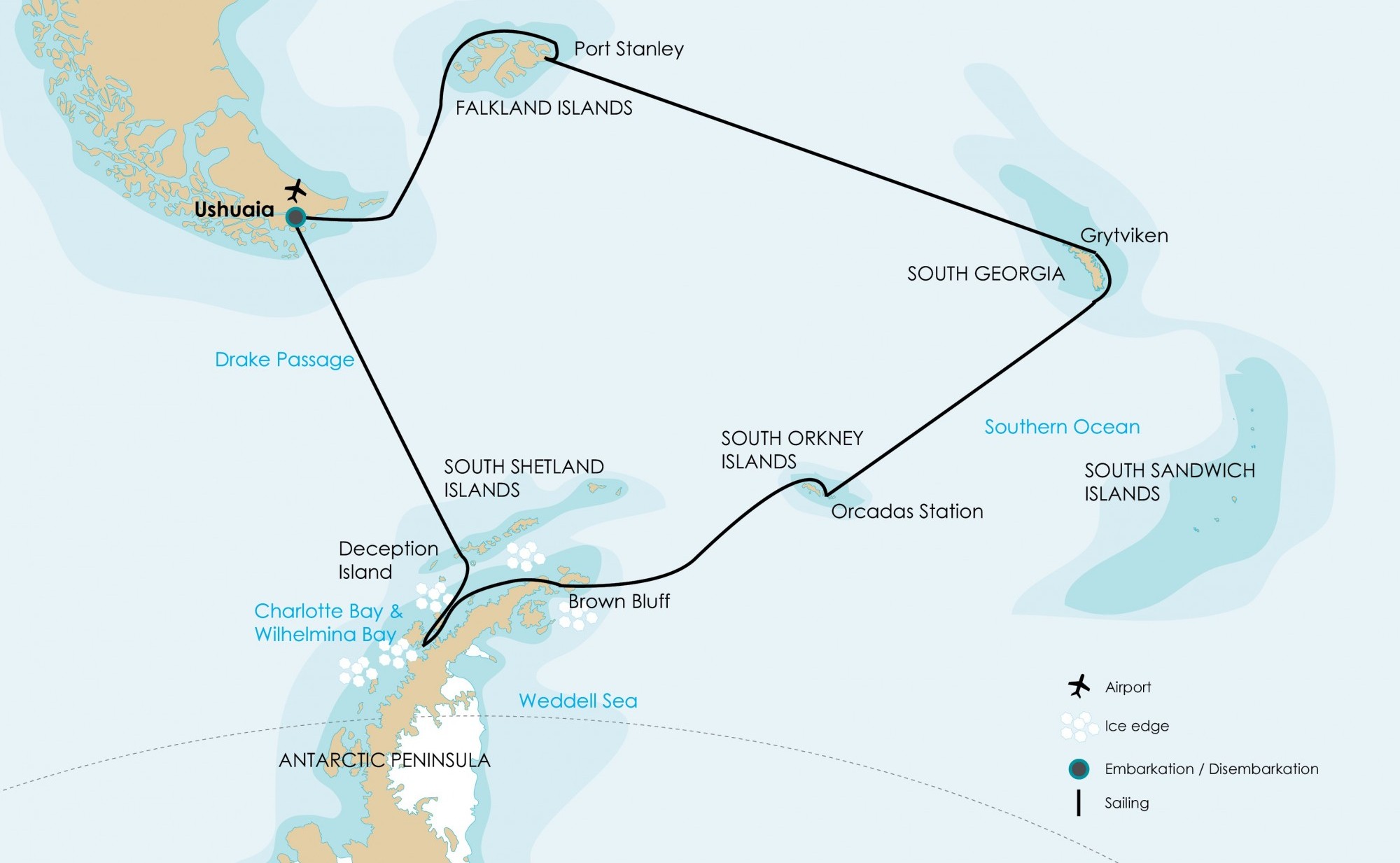
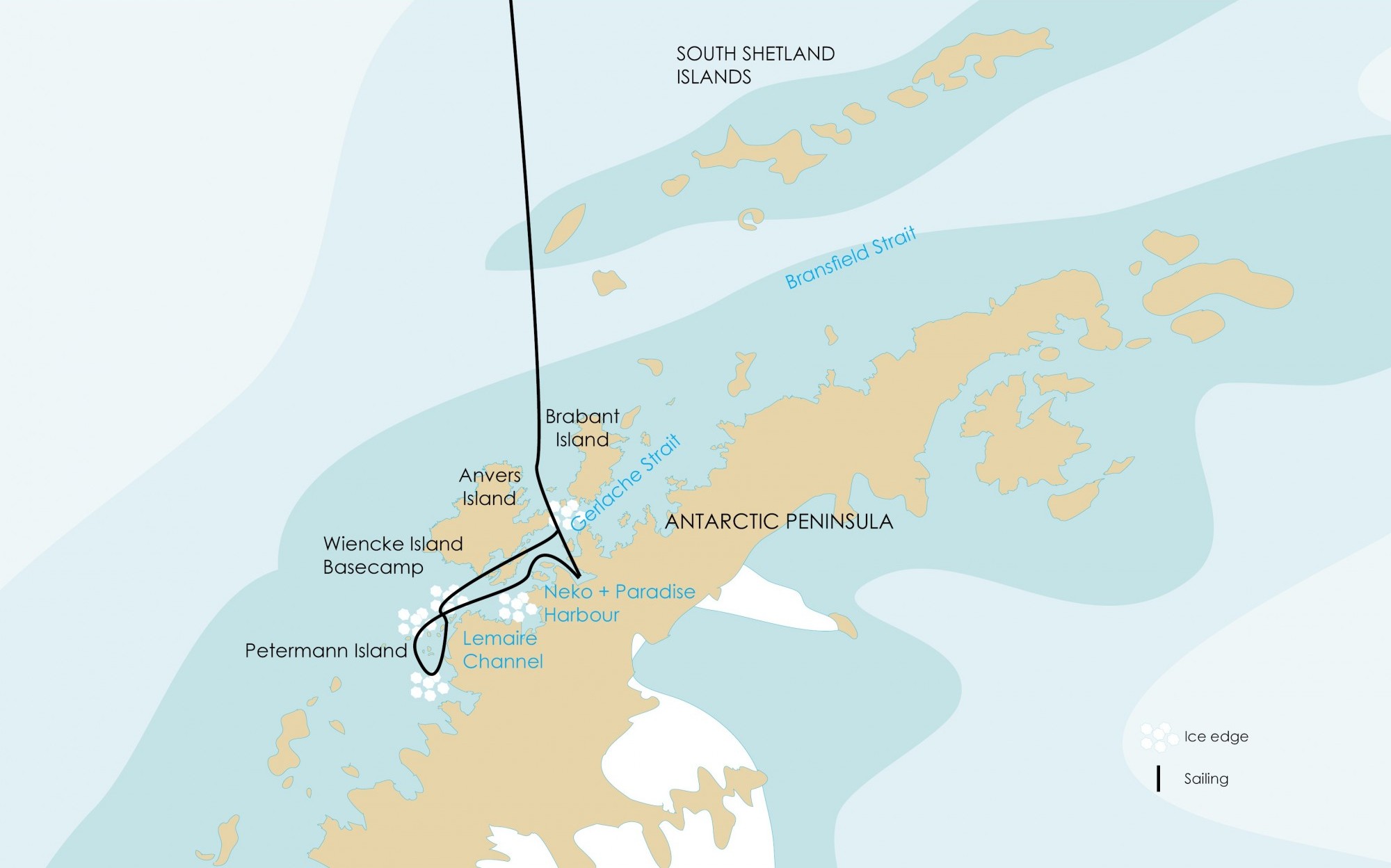
Weddell Sea - Emperor Penguin Voyage
- Pricing
- Price Range Per Person (Quad Porthole to Superior):
11 Day Expedition $11,300 - $14,900 per person
-Please inquire for single supplement pricing. A solo traveler willing to share a cabin with another passenger (or passengers) of the same gender can avoid the single supplement.
-Contact us for details on optional activities available on your particular departure. - Included in tour cost
- Antarctica cruise accommodations
- All meals onboard Antarctica cruise
- All shore excursions throughout voyage by zodiac
- Ship-to-shore helicopter transfers offered on some departures
- Camping, Kayaking, Snowshoeing/Hiking, Mountaineering, and Photo Workshops included on some departures
- Rubber boots available onboard – must be pre-reserved
- Snowshoes available onboard
- English-speaking certified guides
- Entrance fees for all scheduled tours, national parks & archaeological sites
- Southern Explorations pre-departure services
- Excluded from tour cost
- International airfare to/from Argentina and/or Chile
- Hotel accommodations in Argentina and/or Chile - unless otherwise noted
- Ground transportation in Argentina and/or Chile - unless otherwise noted
- Meals in Argentina and/or Chile - unless otherwise noted
- Medical evacuation insurance (mandatory)
- Trip cancellation/interruption insurance (recommended)
- Expedition parka and other personal gear
- Personal expenses (gratuities, alcoholic beverages, telecommunication charges, laundry, airport taxes, etc.)
- Camping available on some departures at an additional cost - includes all gear
- Kayaking available on some departures at an additional cost - includes all gear
- Diving available on some departures at an additional cost
Antarctic Peninsula - Polar Circle, Deep South Discovery & Whale Watching Voyage
- Pricing
- Price Range Per Person (Quad Porthole to Superior):
14 Day Expedition $8,500 - $12,300 per person
-Please inquire for single supplement pricing. A solo traveler willing to share a cabin with another passenger (or passengers) of the same gender can avoid the single supplement.
-Contact us for details on optional activities available on your particular departure. - Included in tour cost
- Antarctica cruise accommodations
- All meals onboard Antarctica cruise
- All shore excursions throughout voyage by zodiac
- Ship-to-shore helicopter transfers offered on some departures
- Camping, Kayaking, Snowshoeing/Hiking, Mountaineering, and Photo Workshops included on some departures
- Rubber boots available onboard – must be pre-reserved
- Snowshoes available onboard
- English-speaking certified guides
- Entrance fees for all scheduled tours, national parks & archaeological sites
- Southern Explorations pre-departure services
- Excluded from tour cost
- International airfare to/from Argentina and/or Chile
- Hotel accommodations in Argentina and/or Chile - unless otherwise noted
- Ground transportation in Argentina and/or Chile - unless otherwise noted
- Meals in Argentina and/or Chile - unless otherwise noted
- Medical evacuation insurance (mandatory)
- Trip cancellation/interruption insurance (recommended)
- Expedition parka and other personal gear
- Personal expenses (gratuities, alcoholic beverages, telecommunication charges, laundry, airport taxes, etc.)
- Camping available on some departures at an additional cost - includes all gear
- Kayaking available on some departures at an additional cost - includes all gear
- Diving available on some departures at an additional cost
Falklands, South Georgia & Antarctica
- Pricing
- Price Range Per Person (Quad Porthole to Superior):
21 Day Expedition $12,600 - $18,150 per person
22 Day Expedition $15,500 - $22,400 per person
-Please inquire for single supplement pricing. A solo traveler willing to share a cabin with another passenger (or passengers) of the same gender can avoid the single supplement.
-Contact us for details on optional activities available on your particular departure. - Included in tour cost
- Antarctica cruise accommodations
- All meals onboard Antarctica cruise
- All shore excursions throughout voyage by zodiac
- Ship-to-shore helicopter transfers offered on some departures
- Camping, Kayaking, Snowshoeing/Hiking, Mountaineering, and Photo Workshops included on some departures
- Rubber boots available onboard – must be pre-reserved
- Snowshoes available onboard
- English-speaking certified guides
- Entrance fees for all scheduled tours, national parks & archaeological sites
- Southern Explorations pre-departure services
- Excluded from tour cost
- International airfare to/from Argentina and/or Chile
- Hotel accommodations in Argentina and/or Chile - unless otherwise noted
- Ground transportation in Argentina and/or Chile - unless otherwise noted
- Meals in Argentina and/or Chile - unless otherwise noted
- Medical evacuation insurance (mandatory)
- Trip cancellation/interruption insurance (recommended)
- Expedition parka and other personal gear
- Personal expenses (gratuities, alcoholic beverages, telecommunication charges, laundry, airport taxes, etc.)
- Camping available on some departures at an additional cost - includes all gear
- Kayaking available on some departures at an additional cost - includes all gear
- Diving available on some departures at an additional cost
Polar Circle, Deep South Discovery Voyage
- Pricing
- Price Range Per Person (Quad Porthole to Superior):
33 Day Expedition $27,400 - $39,500 per person
-Please inquire for single supplement pricing. A solo traveler willing to share a cabin with another passenger (or passengers) of the same gender can avoid the single supplement.
-Contact us for details on optional activities available on your particular departure. - Included in tour cost
- Antarctica cruise accommodations
- All meals onboard Antarctica cruise
- All shore excursions throughout voyage by zodiac
- Ship-to-shore helicopter transfers offered on some departures
- Camping, Kayaking, Snowshoeing/Hiking, Mountaineering, and Photo Workshops included on some departures
- Rubber boots available onboard – must be pre-reserved
- Snowshoes available onboard
- English-speaking certified guides
- Entrance fees for all scheduled tours, national parks & archaeological sites
- Southern Explorations pre-departure services
- Excluded from tour cost
- International airfare to/from Argentina and/or Chile
- Hotel accommodations in Argentina and/or Chile - unless otherwise noted
- Ground transportation in Argentina and/or Chile - unless otherwise noted
- Meals in Argentina and/or Chile - unless otherwise noted
- Medical evacuation insurance (mandatory)
- Trip cancellation/interruption insurance (recommended)
- Expedition parka and other personal gear
- Personal expenses (gratuities, alcoholic beverages, telecommunication charges, laundry, airport taxes, etc.)
- Camping available on some departures at an additional cost - includes all gear
- Kayaking available on some departures at an additional cost - includes all gear
- Diving available on some departures at an additional cost
Ross Sea Includes Helicopters
- Included in tour cost
- Antarctica cruise accommodations
- All meals onboard Antarctica cruise
- All shore excursions throughout voyage by zodiac
- Ship-to-shore helicopter transfers offered on some departures
- Camping, Kayaking, Snowshoeing/Hiking, Mountaineering, and Photo Workshops included on some departures
- Rubber boots available onboard – must be pre-reserved
- Snowshoes available onboard
- English-speaking certified guides
- Entrance fees for all scheduled tours, national parks & archaeological sites
- Southern Explorations pre-departure services
- Excluded from tour cost
- International airfare to/from Argentina and/or Chile
- Hotel accommodations in Argentina and/or Chile - unless otherwise noted
- Ground transportation in Argentina and/or Chile - unless otherwise noted
- Meals in Argentina and/or Chile - unless otherwise noted
- Medical evacuation insurance (mandatory)
- Trip cancellation/interruption insurance (recommended)
- Expedition parka and other personal gear
- Personal expenses (gratuities, alcoholic beverages, telecommunication charges, laundry, airport taxes, etc.)
- Camping available on some departures at an additional cost - includes all gear
- Kayaking available on some departures at an additional cost - includes all gear
- Diving available on some departures at an additional cost
Weddell Sea - Emperor Penguin Voyage
- Trip Dates
- Availability changes constantly on Antarctica cruises. Please contact us for the most up-to-date availability.Friday, November 10, 2023 to Monday, November 20, 2023Monday, November 20, 2023 to Thursday, November 30, 2023Sunday, November 10, 2024 to Wednesday, November 20, 2024Sunday, October 20, 2024 to Saturday, November 30, 2024
Antarctic Peninsula - Polar Circle, Deep South Discovery & Whale Watching Voyage
- Trip Dates
- Availability changes constantly on Antarctica cruises. Please contact us for the most up-to-date availability.Saturday, March 16, 2024 to Friday, March 29, 2024
Falklands, South Georgia & Antarctica
- Trip Dates
- Availability changes constantly on Antarctica cruises. Please contact us for the most up-to-date availability.Saturday, October 21, 2023 to Friday, November 10, 2023Friday, February 2, 2024 to Wednesday, February 21, 2024Monday, October 21, 2024 to Sunday, November 10, 2024Tuesday, December 10, 2024 to Sunday, December 29, 2024
Polar Circle, Deep South Discovery Voyage
- Trip Dates
- Availability changes constantly on Antarctica cruises. Please contact us for the most up-to-date availability and pricing.Monday, March 10, 2025 to Tuesday, March 25, 2025
Ross Sea Includes Helicopters
One Day
-
4 Hours $120Bike through the nostalgic city of Buenos Aires, stop and enjoy restaurants, markets and historic sitesOne Day
-
Chile’s best white wines such as Sauvignon Blanc and Chardonnay
Cool-loving reds such as Pinot Noir and SyrahOne Day -
2 Hours $75Guided walking tour
Highlights of Buenos AiresOne Day -
10 Hours $260Visit the Pacific Coastal city of Valparaiso
Enjoy a seafood lunch at a local restaurantOne Day -
11 Hours $490100+ year old vines
Lunch Viu Manent Winery
Wine tastingOne Day -
1 Day $370Hiking
Glaciers
Horseback ridingOne Day -
3 Hours $230The Latin American Art Museum of Buenos Aires
Heft Collection Tour with Curator Ms. Heft
Fernandez Blanco MuseumOne Day -
4 Hours $275Take an inside look at the real life experiences of Buenos Aires' Jewish population, past and presentOne Day
-
13 Hours $615Mythical Strait of Magellan
Tierra del Fuego
Unique King Penguin ColonyOne Day -
4 hours $185Santa Rita Winery
Maipo Valley Wine Region
Chilean Wine TourOne Day -
4 Hours $120Historic Santiago sites
Plaza de Armas
Presidential Palace
Mercado Central - Sea Food Market
MuseumsOne Day -
4 Hours $285Take in a Tango show with dinner and round trip transfers includedOne Day
-
4 Hours $210Tour Buenos Aires, this beautiful city is called the Paris of South America,One Day
-
4 Hours $260Learn the sensual dance, the Tango at a milonga which is a tango hall frequented by local dancersOne Day
-
8 Hours $495This Buenos Aires tour takes you out of the city to experience what the nearby countryside has to offerOne Day
-
12 Hours $355Wine Tours and Coastal views
Catrala Vineyard
Outstanding White Wines
Pinot Noir
SyrahOne Day
Multi-Day
-
4 Days $1295Explore the magnificent vistas and fascinating history of Tierra del Fuego, at the southern tip of PatagoniaMulti-Day
-
4 Days $2,530Pristine areas in the Araucania RegionMulti-Day
-
5 days $3165Cape Horn National Park
Beagle Channel
Penguins
Glacier AlleyMulti-Day -
4 Days $1145Experience the heart of the Lakes District on this Patagonia tour based in the resort town of BarilocheMulti-Day
-
4 Days $1195Tierra del Fuego National Park
Beagle Channel
UshuaiaMulti-Day -
2 Days $895Colchagua is known as the “King of Chilean Red Wines” and a must-visit for aficionados of vino tintoMulti-Day
-
4 Days $1190Visit all highlight areas of the Island
Local Rapa Nui guidesMulti-Day -
2 Days $660Historic estancia
Horseback riding
4x4 tour
Glacier viewsMulti-Day -
3 Days $1295Considered one of South America’s most impressive sights, Iguazu isn’t exactly on the beaten pathMulti-Day
-
4 Days $1,195Visit the Argentine province where The Andes reach their highestMulti-Day
-
4 & 5 Days $2,320Experience archaeological wonders, offering breathtaking and unique viewsMulti-Day
-
5 Days $2375Amalia Glacier
El Brujo Glacier
Calvo Fjord
Montonas Fjord
Burnal Glacier
Pitt Channel and Guillard Glacier
More.....Multi-Day -
4 Days $3,070Chile’s Northern Patagonia
Picturesque villages and dramatic landscapes
Chiloe culture and traditionsMulti-Day -
4-5 Days $2,935Torres del Paine National Park
Explore all highlights
Outstanding LodgesMulti-Day -
3 Days $1370Whales
Penguins
Elephant Seals
Views & WildlifeMulti-Day -
2 Days $1200Viña del Mar
Drink wine at Catrala Vineyards
ValparaisoMulti-Day -
Stay at the Vik Guest House after a day of unforgettable wine tasting and toursMulti-Day
The M/V Ortelius accommodates 108 passengers in 52 spacious outside cabins with private toilet and shower facilities and a minimum of two portholes or windows.
Deck 3
- Quadruple (4) two upper and two lower berths, private facilities, portholes, 12-14 square meters
- Twin Porthole (4) two lower berths, private facilities, portholes, 12-15 square meters
Deck 4
- Twin Porthole (24) two lower berths, private facilities, portholes, 12-15 square meters
Deck 5
- Twin Window (12) two lower berths, small sofa, private facilities, two windows, 17 square meters
- Twin Deluxe (2) two lower berths, small sofa, private facilities, three windows (aft and side), 17 square meters
- Superior (6) double bed + single sofa bed, separate seating area, private facilities, refrigerator, Flat Screen TV, two windows, 19.4 - 21.2 square meters
VIEW DECK PLAN - HERE
Ship Amenities
- Comfortable staterooms
- Restaurant that seats all passengers in one sitting
- Bar/observation lounge
- Lecture room
- Sauna
- Many open deck spaces
- Large bridge, accessible to guests during their journey
- Sonar
- Onboard 'real time' camera system
- 'OLEX', a system for navigation and ocean mapping which creates realistic, high definition 3D seabed maps
- Equipped with 11 zodiacs for shore excursions
Ship Services
- Manned by a highly experienced, 20-member Russian nautical crew
- International catering/hotel staff of 19
- Onboard doctor
- 6 expedition staff (1 expedition leader and 5 guides/lecturers)
- On select departures, the M/V Ortelius will be equipped with a minimum of two helicopters to enable passengers in reaching remote landing sites that otherwise would be inaccessible.
- Additional Adventure Activities: Kayaking, Camping, Mountaineering, Photography, Diving & Snowshoing (departure specific)
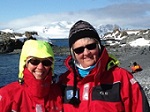 Marisa, we've been back a week and I'm writing to say how wonderful our trip was. Thanks you for all your guidance and planning. Buenos Aires was so interesting. Our tour guide, Alejandro, was top notch-- and very funny. The hotel was in a good location and the all-day tour in Ushuaia was memorable. The ship was well-run and the food was both interesting and plentiful. The crew was professional. The expedition leaders were kind, enthusiastic and very knowledgeable. I can't give you credit for the fantastic weather and incredible scenery but it was an amazing trip. Thank you. - Susan Ogden/Rose Marie Wilson (Akademik Ioffe)
Marisa, we've been back a week and I'm writing to say how wonderful our trip was. Thanks you for all your guidance and planning. Buenos Aires was so interesting. Our tour guide, Alejandro, was top notch-- and very funny. The hotel was in a good location and the all-day tour in Ushuaia was memorable. The ship was well-run and the food was both interesting and plentiful. The crew was professional. The expedition leaders were kind, enthusiastic and very knowledgeable. I can't give you credit for the fantastic weather and incredible scenery but it was an amazing trip. Thank you. - Susan Ogden/Rose Marie Wilson (Akademik Ioffe) Carrie and Justin, I just wanted to send the two of you a message to thank you for all your help putting together our trip to the Antarctic. The trip was absolutely fantastic – definitely the best trip we have ever taken! I would strongly recommend the Akademik Ioffe team to anyone that asks. The places we visited and the excursions we were able to participate in were definitely first-rate, and I would credit the staff for making this happen. They selected great places to visit, and really made each zodiac or on-shore excursion a special experience. The Antarctic is just mind-blowing. We did get south of the Circle – which sounds like it was a bit of an accomplishment – and had really great weather for the entire trip. So again, thanks for making a totally fabulous trip a reality for us. -Ron & Bonnie Milzer (Antarctic Circle Voyage onboard Akademik Ioffe)
- Antarctica - Frequently Asked Questions
- Q: How do I choose an itinerary?A: Antarctica is the trip of a lifetime, offering abundant wildlife and unique landscapes. Travelling to the end of the world is an unparalleled experience. It’s hard to go wrong with any option but for those with specific interests we recommend reviewing our guide to Antarctica Cruises found here or contacting an Adventure Travel Coordinator.Q: Can I make changes or additions to these tours?A: Antarctica cruise itineraries are set and cannot be changed, but you can certainly add pre/post cruise services (hotels, tours, transfers, flights, etc.) in Argentina and Chile. Southern Explorations is happy to assist with any additional services you require.Q: When is the best time to go to Antarctica?A: Travel to Antarctica occurs during the Austral Summer with cruise expeditions departing from late October through March. You may wish to schedule your trip according to what wildlife activities you’d like to observe, or any specific adventure activities you would like to do, such as snowshoeing, skiing, mountaineering, whale watching, and more, which are only offered on certain departures.Q: When is the most affordable time of year to travel to Antarctica? What’s the best way to get a deal on an Antarctica cruise?A: It is a popular misconception that the best way to obtain a deal on an Antarctica cruise is to wait until the last possible moment to book. While this works out sometimes, this scenario is rarer and rarer as Antarctica’s popularity as a tourist destination increases. A few years ago, operators had trouble filling their boats with paying passengers, so last-minute deals were common. Now, most Antarctica cruise departures sell out far in advance, so there is no reason for operators to offer last-minute deals. Currently the best way to obtain a deal on an Antarctica cruise is to book early, as many operators offer early booking discounts.
Generally, it is a good idea to confirm your cruise at least eight months to one year in advance. The time period around the holidays (Christmas/New Year's) tends to sell out further in advance. Fly cruises, during which you fly over the Drake Passage rather than crossing it onboard the vessel, also tend to sell out early, so it is a good idea to book more than one year in advance if you choose this type of cruise.
Prices are higher for travel in late December, January, and early February, as this is high season. Prices are lower early season (November/early December) and late season (late February/March).Q: What can I expect to see at different points during the season?A:- Late October and November: The early part of the season showcases a number of highlights. Landing sites are at their most pristine. The possibility of seeing sea ice is present early on, before it breaks up later in the season. Late October to early November sees Adélie, Chinstrap and Gentoo adult penguins and Antarctic-breeding seabirds starting to come ashore to their breeding sites where they commence courtship rituals and nest building. Shortly thereafter eggs are laid and incubated. Emperor penguins can be seen on the frozen Weddell Sea (visited via helicopter on special Emperor penguin voyages).
Spring flowers begin blooming in the Falkland Islands (Islas Malvinas) and elephant seals are actively courting in South Georgia. South Georgia's female king penguins lay their eggs in November and the parents can be seen "carrying" eggs on their feet so that the parent can shuffle around the colony while the other adult goes out to sea to feed. "Oakum Boys" — king penguin chicks from the previous season — can also be seen in the rookeries. Fur seals litter the beaches in South Georgia with the males aggressive and ready to mate.
- December and January: The increased number of daylight hours brings exceptional opportunities for photographers and non-photographers alike, and the expeditions make the most of the summer weather and continuous hours of daylight. Research activity in the Peninsula at the scientific bases is at its peak. Penguin chicks begin hatching in the Falklands (Islas Malvinas); followed by hatchings in mid- to late-December at sites in the Antarctic Peninsula. Some 30 days after hatching, penguin chicks can be found in "crèches," resembling a nursery of sorts, which leaves both adults free to replenish their food supply. An exciting time of this part of the season is when the parent returns with food and the hungry chicks are persistent in being fed, running after the parent (or any adult penguin with food) in a "feeding chase." Whale sightings of baleen and toothed whales escalate in the Peninsula area. Seal pups can be seen on the beaches in South Georgia. Sea ice is also beginning to break up, which allows for the possibility to begin to access to rarely visited sites in the Weddell Sea, Ross Sea and within the Antarctic Circle.
- February and March: Sightings of whales are at their peak in the Peninsula and an increasing number of fur seals can be found along the Peninsula and offshore islands. Young fur seals are also quite playful in South Georgia. Penguin colonies are very active with the penguin chicks beginning their molt - losing their fuzzy down and developing their adult plumage. During this timeframe, the parents will abandoned their chicks, and return out to sea to feed and fatten up for their own molting stage. Most colonies (Adélie, Chinstrap and Gentoo) are nearly vacated by the end of February to early March. Blooming snow algae is prevalent and receding pack ice has reached its peak for the season, allowing for easier exploration within the Weddell Sea, Ross Sea and Antarctic Circle.
Q: What is the weather like in Antarctica?A: Antarctica is the highest, driest, windiest, coldest place on earth, but keep in mind that all tourism trips occur during Austral summer. The average summer temperature in the Antarctic Peninsula area is around 25 to 32°F (-4 to 0°C), although sometimes it will feel substantially colder due to the wind chill factor and water splashing up while riding in zodiacs. You can expect to encounter varied conditions including rain, snow, high winds, bright sun, and fog.Q: What is a typical day like in Antarctica?A: All three meals are eaten on board the ship. After breakfast, you will head out for your morning excursion for 2 to 5 hours, then get back on board to eat lunch while the ship navigates to the next landing site. Here you will once again disembark on land for 2 to 5 hours before dinner.Q: How physically fit do I need to be to enjoy a trip to Antarctica?A: You do not need to be extremely physically fit to travel to Antarctica, but should be comfortable walking short distances over uneven terrain, including snow, ice, and rock. Most ships also have a steep metal gangway that you must descend and ascend to embark/disembark the small zodiac boats that ferry passengers to shore. Your guides will always be there to assist you.Q: While in Antarctica, will I get to get off the ship and walk around on land?A: Yes! You will make landings every day you are in Antarctica, and the cruise staff will ensure you spend as much time on land as possible. This is true of every Antarctica cruise we offer. There is no cruise during which you stay onboard the ship the entire time.Q: How much time do I need to visit Antarctica?A: Standard Antarctic Peninsula cruise itineraries are 10 to 12 days long. The shortest Antarctica voyage we offer is 6 days long, with our longest being 32 days. Please inquire for details about specific voyages.Q: What are your booking and cancellation policies?A: All Antarctica cruises have different deposit policies, with the deposit amount typically ranging from $1500 per person to 25% of the total trip costs. Final payment is usually due between 100 days and 120 days prior to travel.
Antarctica cruise cancelation policies vary widely from ship to ship. The cancelation penalty from the time of booking up until 90 or 120 days prior to departure can be as little as $500 per person or as much as $5000+ per person. Generally, all cruises will have a 100% cancelation penalty within 90 days of departure. Please inquire for details about cancelation penalties for specific ships.Q: What kind of accommodations can I expect?A: Accommodations and amenities on board Antarctica cruises vary from simple 3-star to luxury 5-star. Please inquire for details.Q: Do tours include airfare?A: Most Antarctica cruises do not include any airfare, though some include roundtrip flights from Buenos Aires to Ushuaia, and “fly cruises” include flights from Punta Arenas, Chile to Antarctica or to the Falkland Islands. Southern Explorations is happy to arrange any flights you require within Argentina or Chile. Please inquire about airfare inclusions for specific cruises.Q: How many people are on your tours?A: The Antarctica cruise ships we offer range in size from a capacity of 54 to 200 passengers. “Mega ships” with thousands of passengers on board are not allowed to make landings in Antarctica, so all vessels are relatively small.Q: Do I need travel insurance, what all do I need, and how much does it cost?A: All Antarctica cruises require that passengers purchase travel insurance covering emergency medical evacuation and repatriation. The cost of medical evacuation transport from Antarctica is high, and as it is the responsibility of the traveler, this coverage is imperative. Though trip cancellation insurance is not required, it is highly recommended. The cost of travel insurance varies from individual to individual and depends on many factors, such as cost of trip covered, age of traveler, where you live, etc. We recommend contacting Berkshire Hathaway or Travel Guard, or click here to compare other trip insurance companies.Q: Where do Antarctica cruises begin and end?A: Most Antarctica cruises begin/end in either Ushuaia, Argentina or Punta Arenas, Chile. Occasionally cruises depart directly from Buenos Aires, Montevideo, or other port cities, but this is rare. When departing from Ushuaia, you board the cruise at the pier in town and cross the Drake Passage onboard the vessel. Trips departing from Punta Arenas are "fly/cruise" programs that fly you (one-way or both-ways) by small aircraft to the South Shetland Islands, just off the Antarctic Peninsula to embark your expedition ship there. There are also some cruises that start with a flight from Punta Arenas to Stanley in the Falkland Islands. Please check your itinerary for any inclusions, or needed additions, such as pre- or post-trip hotel nights and domestic flights to your embarkation cities. Southern Explorations can book any needed pre- or post-trip hotels, domestic flights, tours and transfers, and include them within your trip costs.Q: What can I expect while crossing the Drake Passage? Will I get seasick?A: The Drake Passage is the body of water between Cape Horn (the southernmost tip of South America) and the Antarctic Peninsula. On most Antarctica cruise ships it will take a full two days to cross the Drake Passage. This passage has some of the roughest recorded sea conditions in the world (the “Drake Shake”), but it can also be pristinely calm (the “Drake Lake”). Conditions in this waterway can vary at any time of year depending on weather, and it is impossible to predict how rough it will be in advance. Some passengers experience seasickness, and others do not. It is advisable to come prepared by packing motion sickness remedies. All ships also have doctors onboard, and these medical professionals are extremely adept at assisting passengers with any seasickness concerns. Once in Antarctica, sheltered waters are normally encountered with little problem for rough seas. NOTE: There are also options to do what is called a "fly/cruise" program where you fly by small aircraft to the South Shetland Islands, just off the Antarctic Peninsula and then join up with your expedition cruise ship there, thus avoiding crossing the Drake Passage onboard the vessel.Q: Can I bring my photographic drone to Antarctica?A: The governing body of Antarctic tourism is called the International Association of Antarctica Tour Operators (IAATO) and Southern Explorations is a member of this organization. IAATO members have agreed that they will not allow the recreational use of UAVs (drones) in the unique, and often wildlife rich, coastal areas of Antarctica. Through the unique global partnership that is the Antarctic Treaty system, the entire continent is formally designated as a 'natural reserve, devoted to peace and science'. Antarctica is regarded as the last great wilderness on our planet, still pristine with wildlife and landscapes that show little evidence of direct human activity. Visiting and operating in an environment like this comes with a responsibility to do so carefully and with minimal impact. UAVs are a relatively new phenomenon and IAATO Is therefore taking a cautionary approach, as it is possible they could have a negative impact on the environment. Also, as you can imagine, many drones flying over a penguin colony would not only be potentially detrimental to the birds (adult penguins are distracted by drones, which allows a Skua to swoop in and eat their eggs or swipe one of their chicks), but will also greatly diminish the experience of other passengers seeking to enjoy the beauty and solitude of the Seventh Continent. So, please, leave the drones at home!Q: Will I get more information on packing, vaccines, currency, electricity, etc.?A: After booking, you will receive a link to our online trip portal which includes all of the need-to-know information that is specific to your itinerary. This includes packing lists, restaurant recommendations, tipping guides, FAQs, vaccine recommendations and currency information. Your Adventure Travel Coordinator will also be a great resource for any other information you may need. - Late October and November: The early part of the season showcases a number of highlights. Landing sites are at their most pristine. The possibility of seeing sea ice is present early on, before it breaks up later in the season. Late October to early November sees Adélie, Chinstrap and Gentoo adult penguins and Antarctic-breeding seabirds starting to come ashore to their breeding sites where they commence courtship rituals and nest building. Shortly thereafter eggs are laid and incubated. Emperor penguins can be seen on the frozen Weddell Sea (visited via helicopter on special Emperor penguin voyages).


 The 299-ft M/V Ortelius was built in Poland in 1989 as a research vessel for the Russian Academy of Science, previously named the Marina Svetaeva. In 2020, the Ortelius was converted into a 108 passenger polar expedition vessel, offering passengers a quality exploratory wildlife program during their Antarctica travel, maximizing wildlife observation by spending as much time ashore as possible. The Ortelius complies with the latest SOLAS (Safety of Life At Sea) regulations and is ice-strengthened with the highest ice class notation (UL1 equivalent to 1A). The vessel can navigate in solid one-year sea ice and loose, multi-year pack ice, and enable passengers to visit remote locations on their Antarctica adventures.
The 299-ft M/V Ortelius was built in Poland in 1989 as a research vessel for the Russian Academy of Science, previously named the Marina Svetaeva. In 2020, the Ortelius was converted into a 108 passenger polar expedition vessel, offering passengers a quality exploratory wildlife program during their Antarctica travel, maximizing wildlife observation by spending as much time ashore as possible. The Ortelius complies with the latest SOLAS (Safety of Life At Sea) regulations and is ice-strengthened with the highest ice class notation (UL1 equivalent to 1A). The vessel can navigate in solid one-year sea ice and loose, multi-year pack ice, and enable passengers to visit remote locations on their Antarctica adventures.